Bloody good way to wrap up our day at the North Brisbane Cup, everyone knows I hate a burnout 😂 We managed to take out the 2💨 and 450 feature race 🤟 Looking forward to doing it all again next year!
Source: Jack Miller on Facebook
Bloody good way to wrap up our day at the North Brisbane Cup, everyone knows I hate a burnout 😂 We managed to take out the 2💨 and 450 feature race 🤟 Looking forward to doing it all again next year!
Source: Jack Miller on Facebook
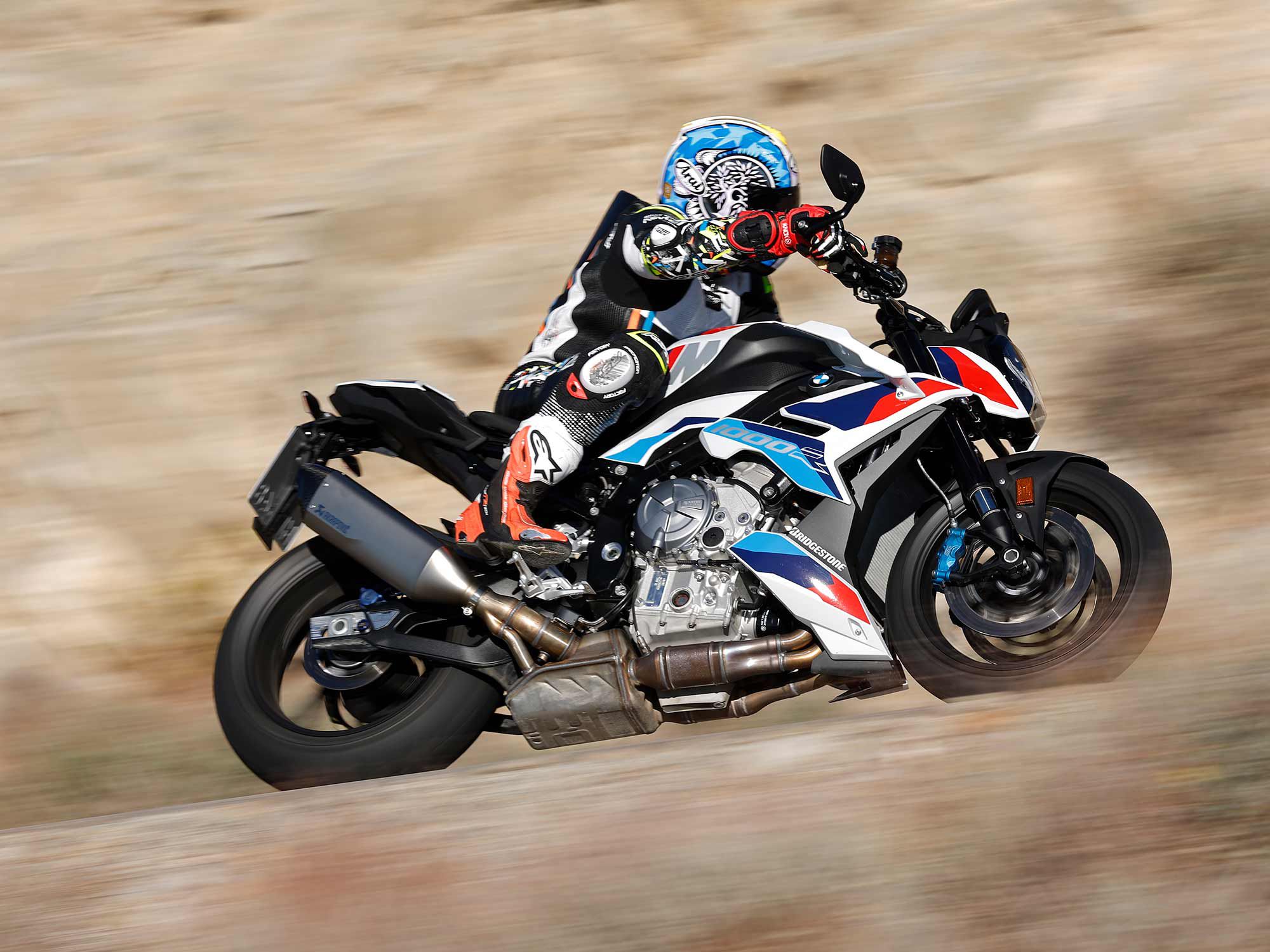
A few short years ago the concept of 200 hp naked bikes for the street seemed as pointless and unlikely as a perforated umbrella. But here we are in late 2022 and suddenly we find ourselves with a small but burgeoning club of fairing-free firebreathers capable of laying a double century of horses to the pavement.
Ducati’s Streetfighter V4 and MV’s Brutale 1000 RR are both in the 200 hp club, with Kawasaki’s supercharged Z H2 SE just a couple of horsepower short. Now BMW Motorrad has joined them with the astounding M 1000 R hyper-naked, a machine so capable, so rapid, and, with a claimed 205 hp on tap, so powerful it would surely have competed in World Superbikes not so long ago.
BMW already has its long-running, 165 hp S 1000 R naked, of course, which in performance terms sits in the subcategory of super-nakeds just below the firebreathers. To create its M, BMW has taken the new ShiftCam engine from the 2023 S 1000 RR superbike and inserted it into the S 1000 R’s naked chassis, meaning it makes the same power and torque, and even shares the same gearbox, as the track-focused RR.
Aerodynamic wings help to suppress wheelies by adding 24.3 pounds of downforce at 137 mph. New brakes, again taken directly from the S 1000 RR superbike, give improved braking. Chassis dimensions remain the same as the Single R but the electronic suspension (DDC Dynamic Damping Control) has been recalibrated to deal with the 40 hp increase in peak power.
Electronic rider aids also get a significant upgrade and recalibration to deal with the improved engine and braking power, and are linked to a six-axis IMU. New for the M 1000 R (and S 1000 RR) is the Brake Slide Assist system, which allows some drift on corner entry before the lean-sensitive ABS kicks in.
Transplanting the higher-revving ShiftCam engine from the latest S 1000 RR into the M 1000 R means the naked M has a peak of 205 hp at 13,750 rpm, up from 165 hp for the standard S 1000 R. Peak torque is 83.3 lb.-ft. at 11,000 rpm, which is a fraction down on the 84 lb.-ft. that the S 1000 R manages at a substantially lower 9,250 rpm, indicating the much racier nature of the new bike’s engine. There’s also an extra tooth on the rear sprocket to reduce the final drive ratio.
The standard 165 hp S 1000 R motor is flexible and as well suited to a commute into the city as it is on a day at the racetrack. I was worried that the M would lose that all-round usefulness, but it hasn’t. To make a 205 hp superbike engine user-friendly on the street is a big ask, but BMW has managed it.
Fueling is smooth, the power delivery is linear, and the quickshifter is light and perfectly matched with each up-or-down change. Even in sixth gear the motor pulls effortlessly below 30 mph. It’s easy to forget you’re sitting on top of an engine designed to win superbike races as it trickles without fuss through traffic or flows in a lazy gear too high through a local set of twisties.
The midrange is superb. Peak torque is a fraction down and higher in the rpm compared to the S 1000 R, but you’d be hard-pressed to tell. The M surges to 8,000 rpm and is thoroughly enjoyable to ride using the middle part of the rev range alone, short-shifting effortlessly via the slick and perfectly set-up quickshifter. In real terms, nothing has been lost in the move to the ShiftCam I4.
But—and let’s face it, you knew this was coming—from that strong but civilized midrange it revs wildly on to redline just short of 14,600 rpm. Switch the riding mode to Race or Race Pro and at 9,000 rpm the M 1000 R morphs into an entirely different beast. It revs so freely that it feels like the engine is frictionless. A wall of frantic air grabs feverishly at your leathers, you bend your torso into some kind of defensive tuck… And the speed just builds relentlessly.
Luckily, BMW allowed us a handful of laps of the Almeria racetrack in southern Spain to experience its full potential and, boy, does it deliver. Top speed is a quoted 174 mph, 16 mph higher than the standard S 1000 R. At the end of the long back straight it was still accelerating, still stable as rock under its aero winglets, and feeling like it would keep driving forever. Or until my head blew off.
BMW claims the winglets produce 24.3 pounds of downforce at 220 kph (137 mph), and they’re mounted on a substructure that transmits that force into the chassis—and on track you feel their presence, incredibly stable.
BMW’s electronic Dynamic Damping Control (DDC) is correlated to the bike’s riding modes—Road, Rain, Dynamic, Race, and Race Pro—to deliver a ride biased toward comfort at one end of the riding spectrum and stiffer track settings at the other.
Each mode can also be tuned to suit your riding mood and road but I was happy using the presets. On the road, you really notice a difference between the riding modes, which change the handling and character of the bike substantially. Road is obviously set for comfort; there’s more movement and weight transfer through the suspension working, while the ride quality is supple and anything but jarring.
Once into Dynamic mode you feel the difference immediately as the suspension stiffens, adding a degree of tautness to the handling that’s ideal for brisk, sporting days in the hills. For the track, Race and Race Pro are optimized for slicks or track-biased rubber rather than the Bridgestone RS11 tires fitted as standard. For the majority of this test, I simply opted for the standard Dynamic mode, flicking to Road for urban work.
Those Bridgestones took a while to warm up and felt a little dull in terms of feedback but the M’s steering is light and the hyper-naked flicks between lefts and rights like a dream, not just for a 205 hp machine but any sportbike on the market. BMW has maintained the S 1000 R’s 439 pounds (wet), which is class-leading, and there’s genuine agility and sense of energy in the M chassis. Only Ducati’s more expensive Streetfighter V4 SP is (a few pounds) lighter, while the M is 88 pounds lighter than Kawasaki’s supercharged Z H2 SE.
The seat is firm-ish and sporty while the bars are slightly wider than the naked R’s, sitting you in a more aggressive stance, but the riding position is not radical. When the road gets bumpy or you’re settling in for some freeway miles, the suspension can be softened on the move (into Road or Rain mode) to add plushness to the ride.
Cruise control and three-stage heated grips are most welcome standard features while the R’s informative 6.5-inch dash remains, with the BMW navigation wheel on the left side. There’s also an optional race dash, which clearly shows lean angle, brake pressure, and TC intervention.
The addition of M brakes is one of the most significant upgrades that the M 1000 R gets over the lower-spec S model, which makes sense given its serious performance boost. On the road and especially on track the brakes feel incredibly strong. On the road you only ever need one finger on the adjustable radial flip-up lever, designed to flip up and not snap in a low-speed crash. The brakes are supported by BMW’s lean-sensitive ABS Pro system, which features settings to suit the different riding modes, and like the latest S 1000 RR, the M 1000 R now benefits from the Brake Slide Assist system that allows a preset drift angle to be introduced. In theory, you can now drift safely into corners.
Aside from BSA (Brake Slide Assist), there are so many rider aids and options we didn’t have enough time on the test day to try them all. But those we did play with worked to the highest level. Everything can be customized too, from Rain mode with high levels of intervention to minimal rider aids and intervention with the ABS active on the front wheel only. One button on the left bar cluster turns off the TC and anti-wheelie control allowing you to loft the front end…should you wish.
In conclusion, our all-too-brief ride revealed that the new M 1000 R makes startling, close to being market-leading power, while its electronic package of rider aids and riding modes are both extensive and class-leading. Add accurate and lightweight steering, agile handling, and awesome braking power—not to mention the M look and a high level of finish—and suddenly the 200 bhp naked club looks like an interesting place to be.
2023 BMW M 1000 R Technical Specifications and Price
| PRICE | $21,345 |
|---|---|
| ENGINE | 999cc, liquid-cooled inline 4-cylinder; 4 valves/cyl. |
| BORE x STROKE | 80.0 x 49.7mm |
| COMPRESSION RATIO | 13.3:1 |
| FUEL DELIVERY | Fuel injection |
| CLUTCH | Multiplate slipper, self-reinforcing |
| TRANSMISSION/FINAL DRIVE | 6-speed/chain |
| FRAME | Aluminum, engine load bearing |
| FRONT SUSPENSION | 45mm upside-down fork, fully adjustable, optional electronic; 4.7 in. travel |
| REAR SUSPENSION | Single shock, fully adjustable, optional electronic; 4.6 in. travel |
| FRONT BRAKES | 4-piston Monoblock caliper, dual 320mm disc w/ ABS |
| REAR BRAKE | 1-piston Brembo floating caliper, 220mm disc w/ ABS |
| WHEELS, FRONT/REAR | Spoked; 17 x 3.5 in. / 17 x 6 in. |
| TIRES, FRONT/REAR | Bridgestone Battlax RS-11; 120/70-17 / 200/55-17 |
| RAKE/TRAIL | 24.2°/3.8 in. |
| WHEELBASE | 57.3 in. |
| SEAT HEIGHT | 32.6 in. |
| FUEL CAPACITY | 4.3 gal. |
| CLAIMED CURB WEIGHT | 439 lb. |
| WARRANTY | 3-year |
| CONTACT | bmwmotorcycles.com |
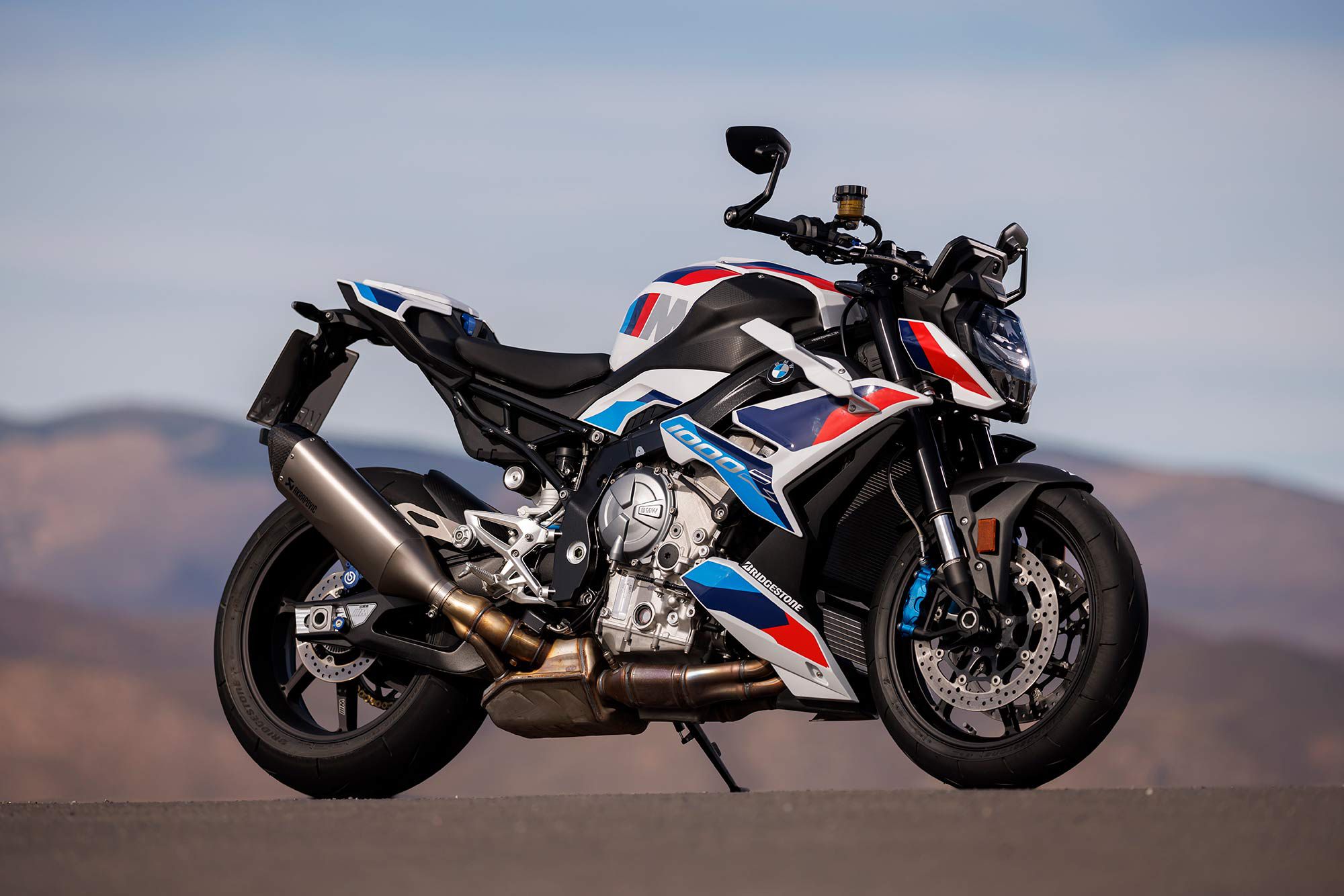
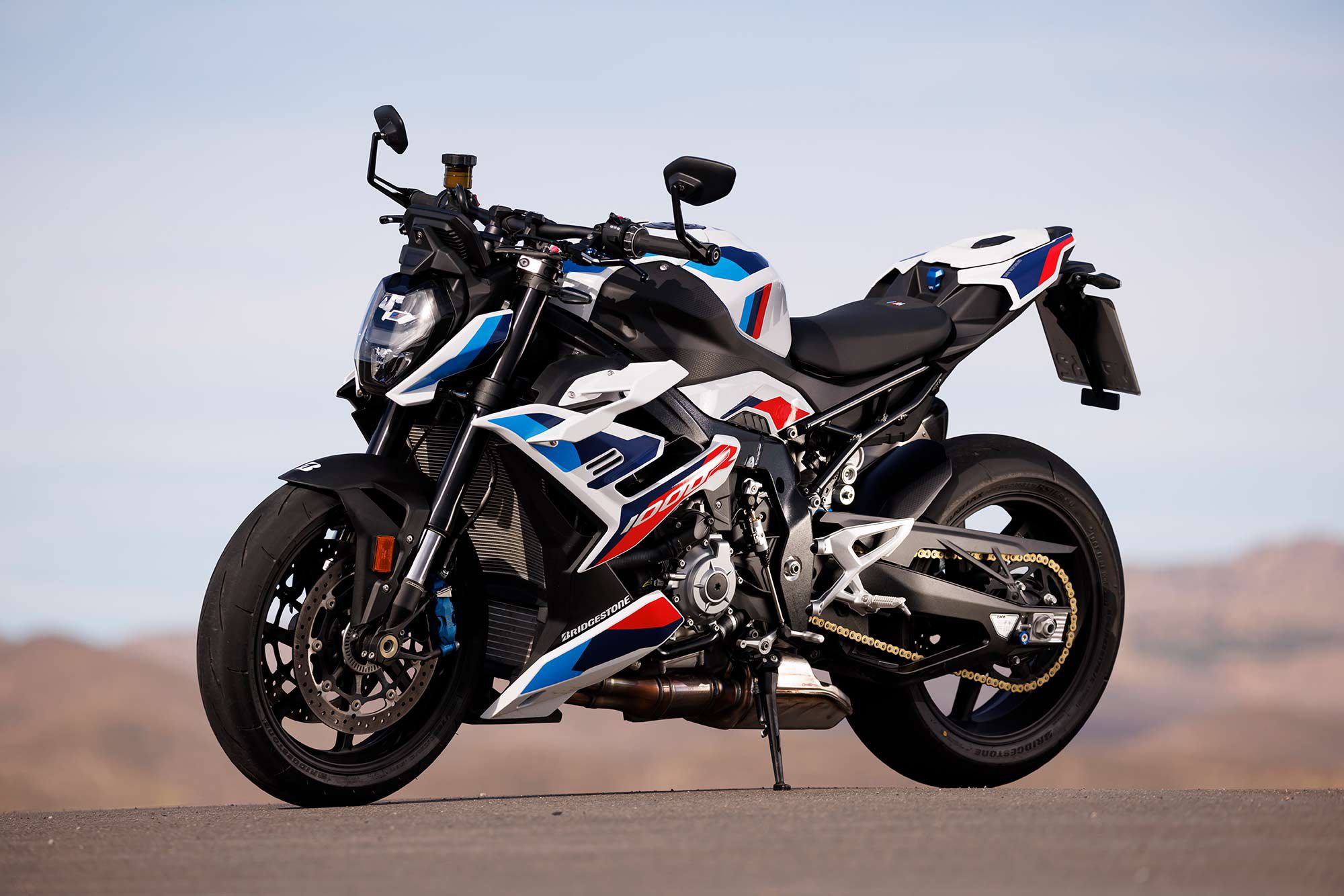
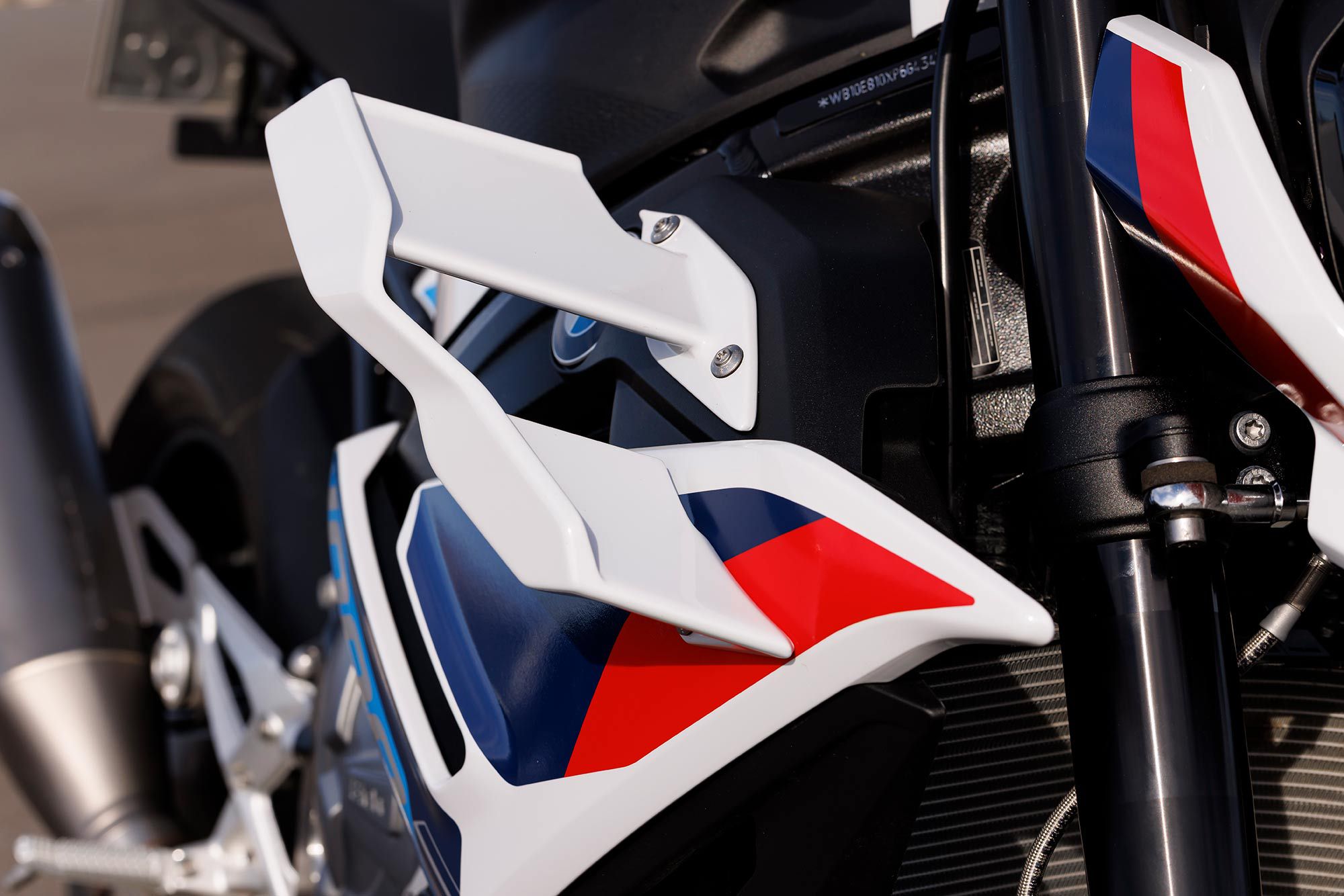
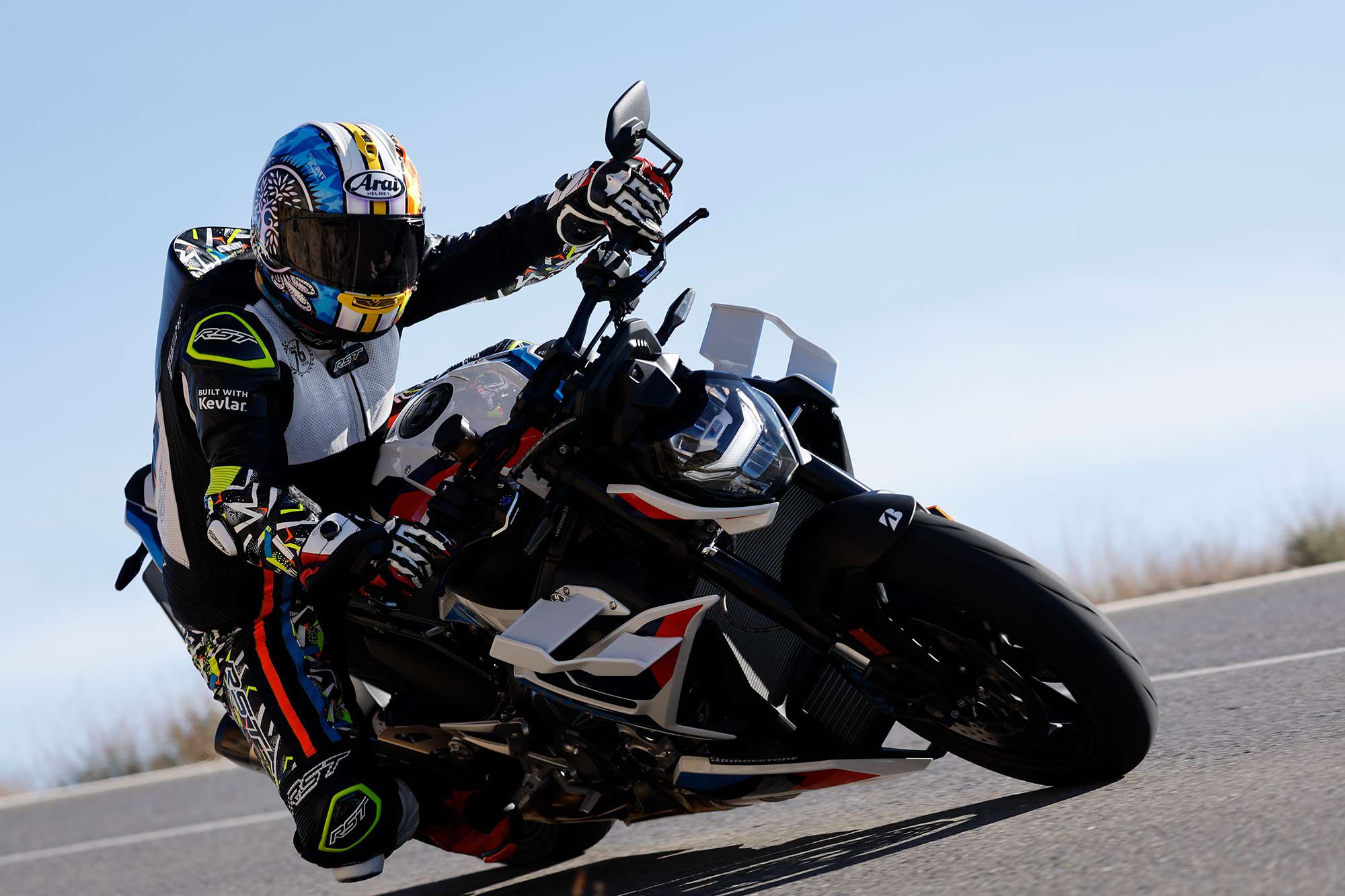
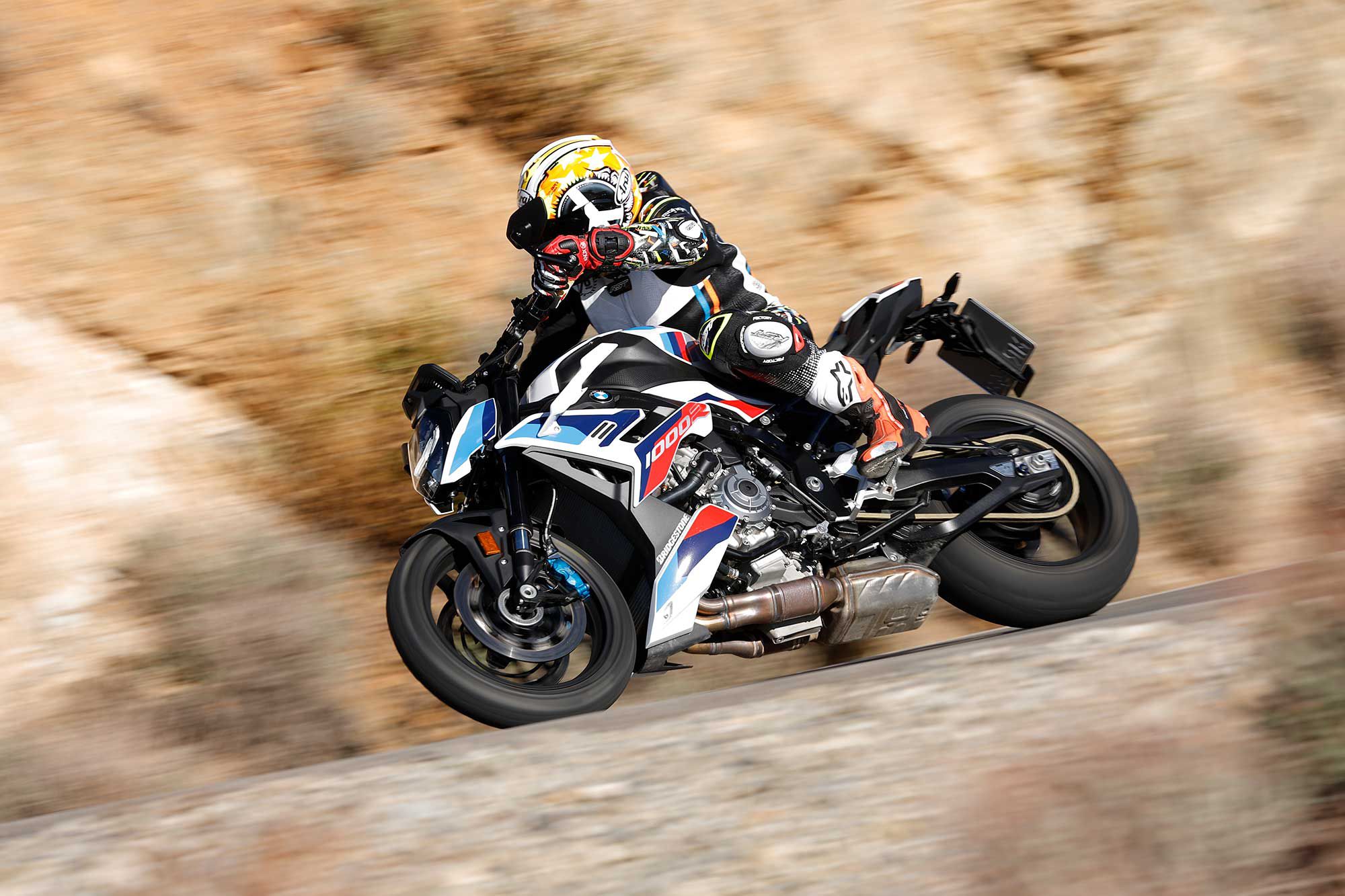
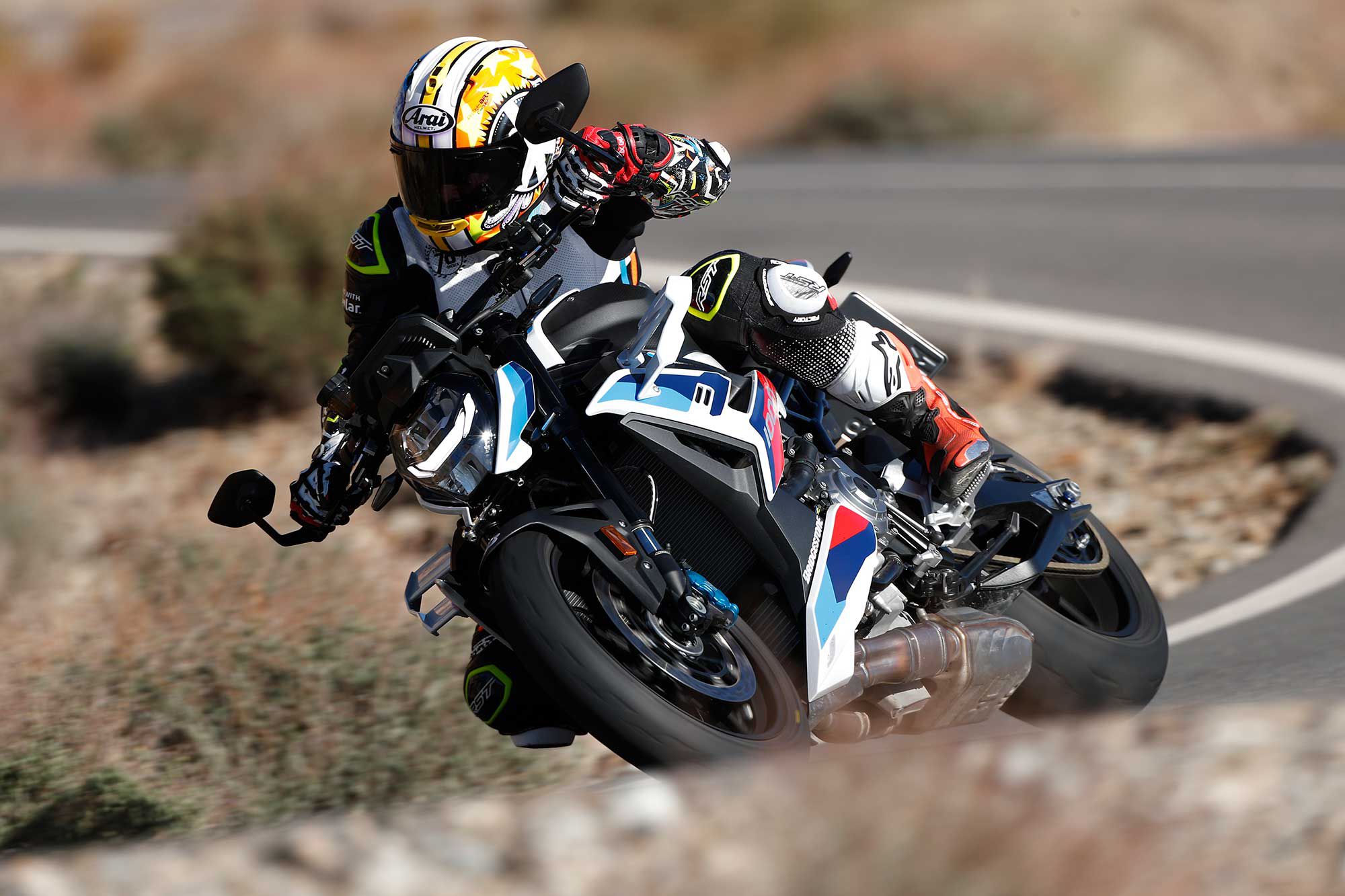
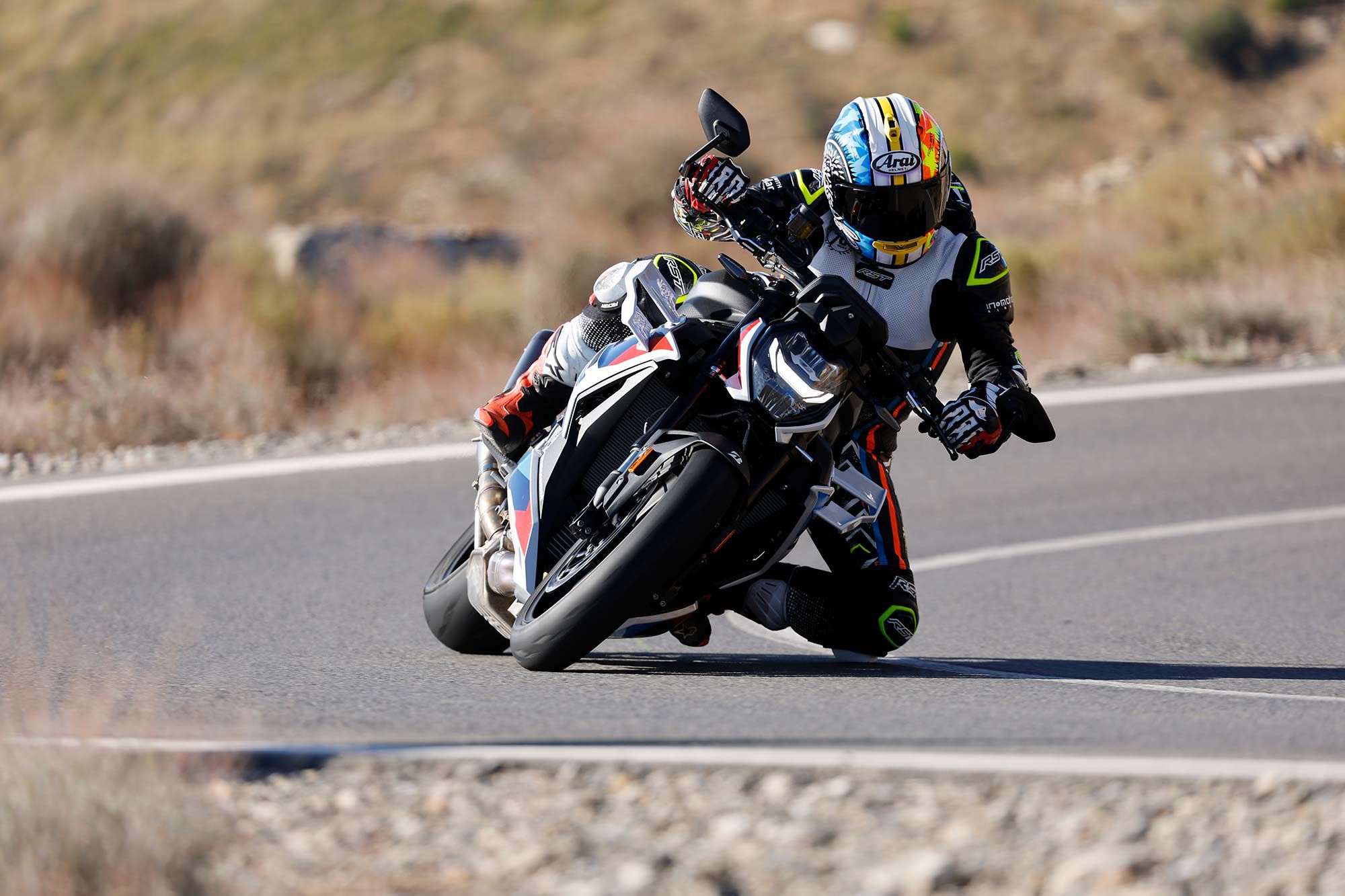
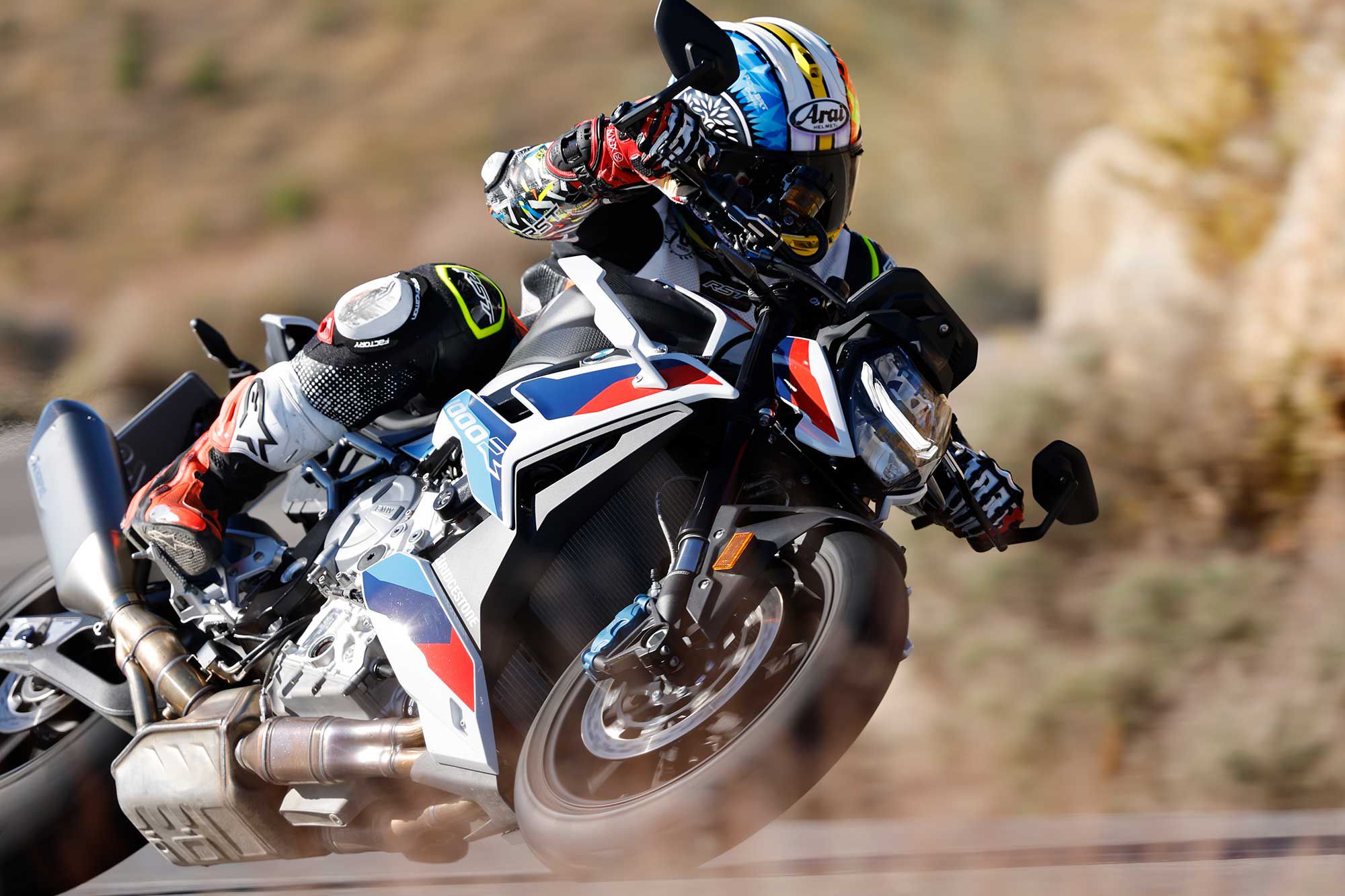
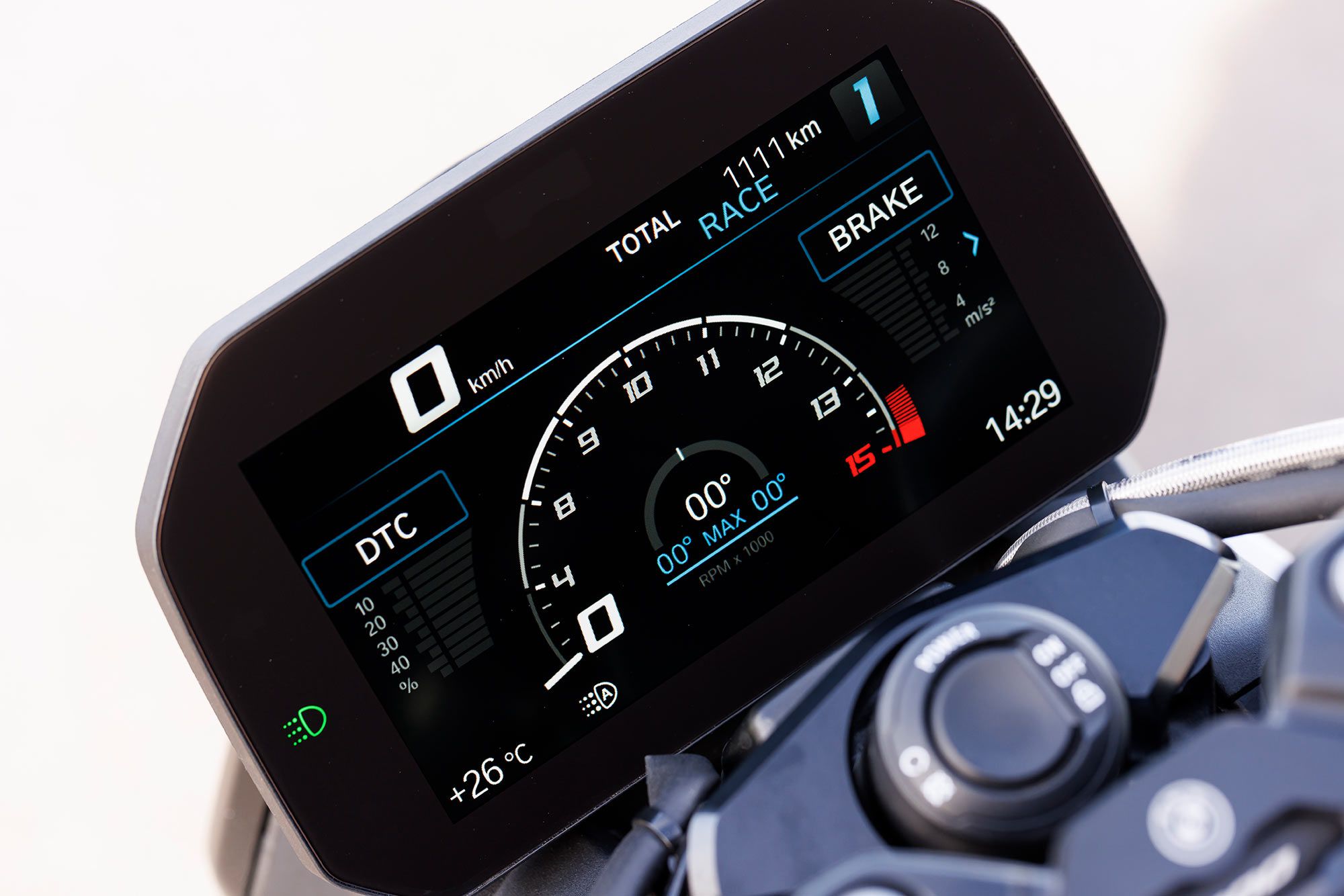
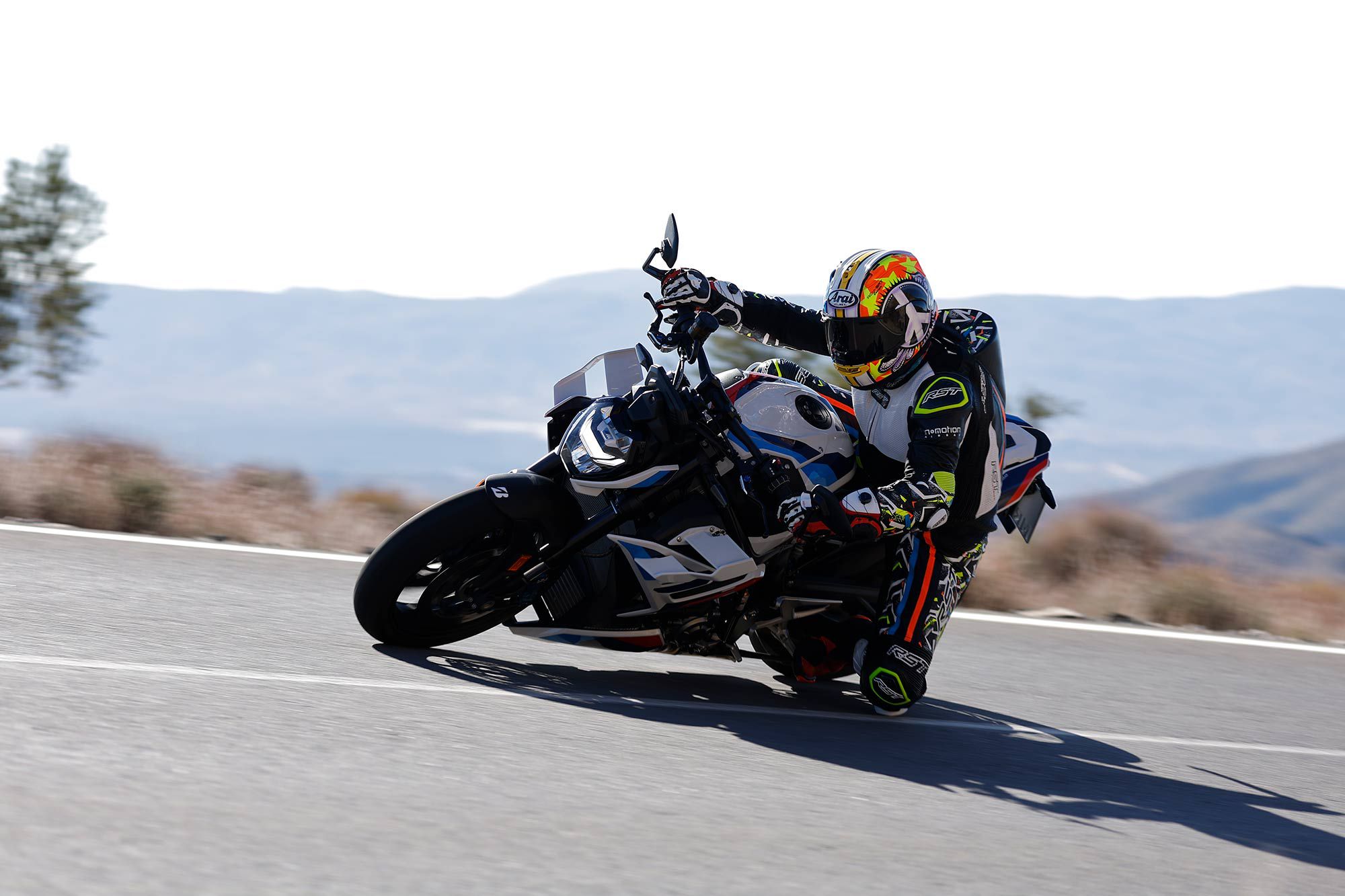
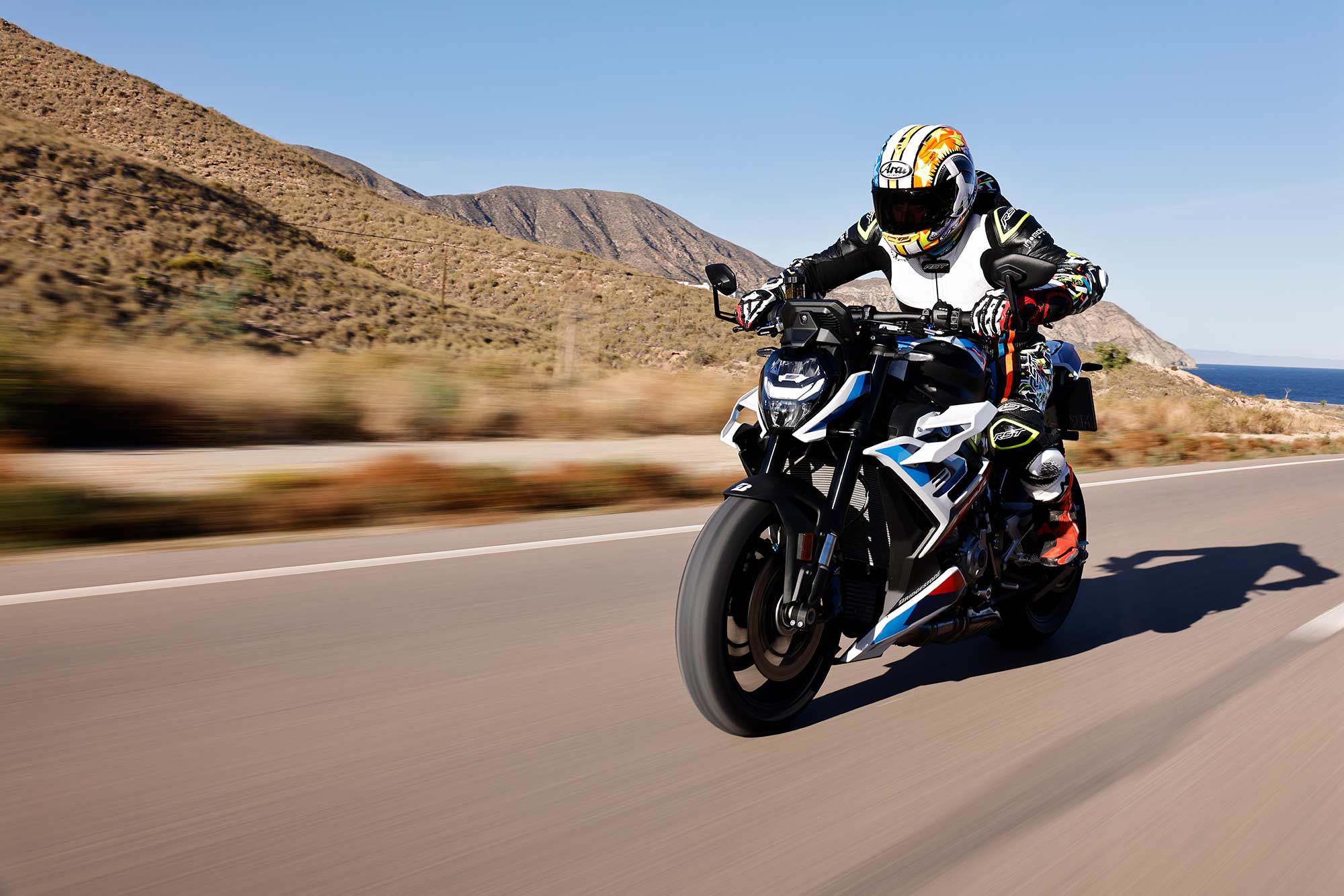
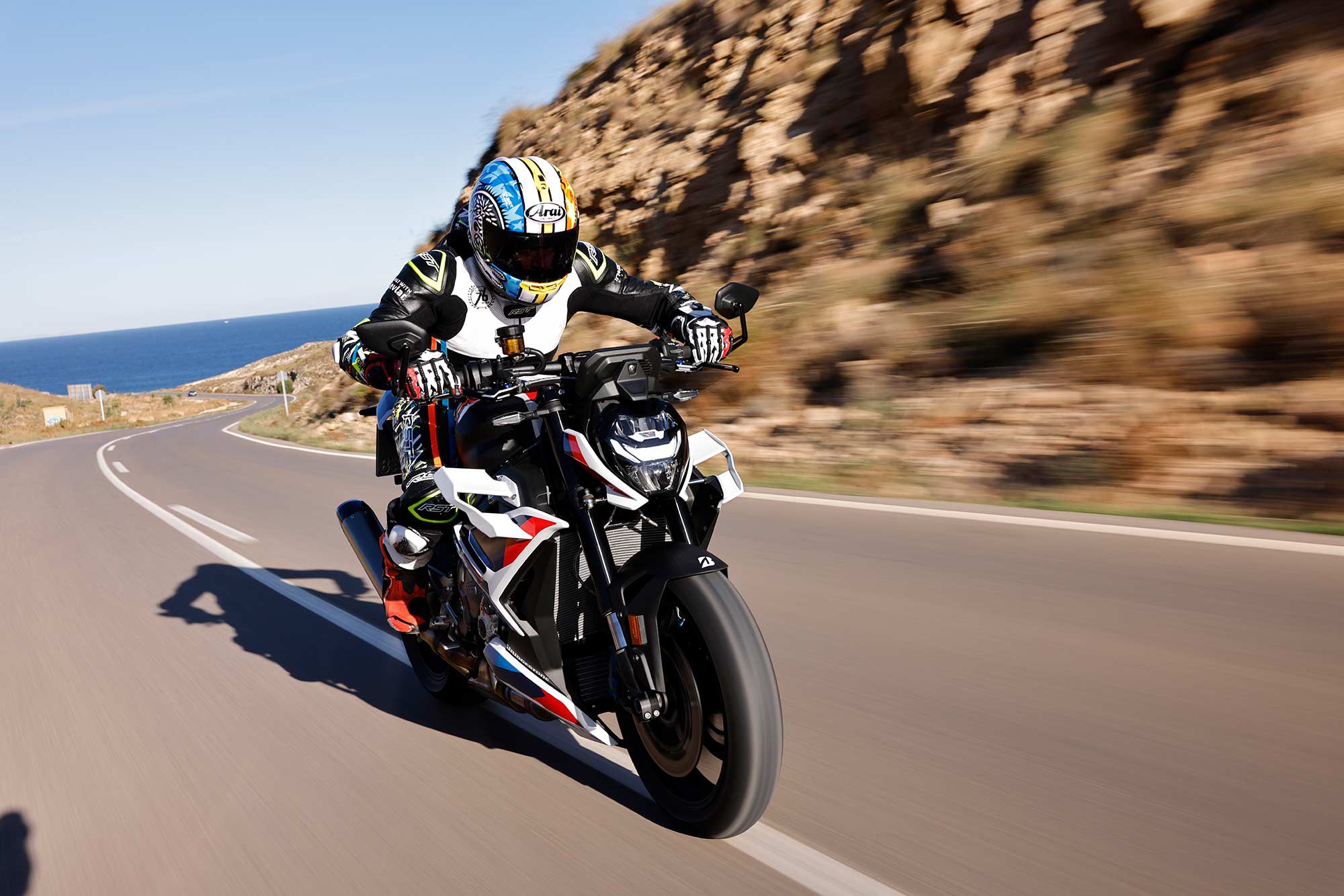
Source: MotorCyclistOnline.com
The following motorcycle camping trip story was part of Rider‘s adventure-themed November 2022 issue, which also included stories on the TransAmerica Trail, Trans Canada Adventure Trail, and the Trans Euro Trail.
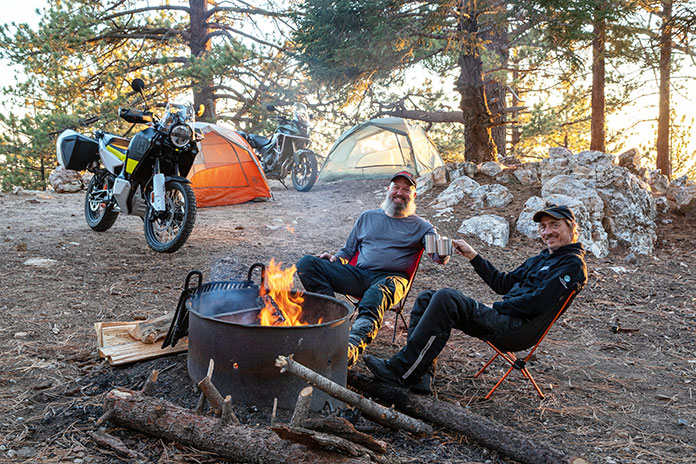
Buried deep in my iPhone is a text message I sent to my riding buddies on Feb. 29, 2008 (lucky leap day, as it turns out):
I got the job!! I’m Rider’s new Road Test Editor! Woohoo!
I had just returned from my second interview with Mark Tuttle, Rider’s former editor-in-chief. We had met up for a motorcycle ride, and during lunch at a beachside cafe, he offered me the job.
Working full-time at a motorcycle magazine really has been a dream come true. It’s been an honor and a privilege to ride hundreds of new motorcycles and travel all over the world. But one of the most rewarding parts of my job has been getting to know fellow motorcycle enthusiasts who work in the industry – passionate, intelligent, talented individuals who have become not only trusted colleagues but true friends.
One of those friends is Kevin Wing. He’s one of the best motorcycle photographers in the business, and his work has been featured in Rider, Motorcyclist, Sport Rider, Cycle World, and other leading publications since the ’90s. Wing is responsible for countless inspiring covers and vivid images that bring this magazine to life, and he deserves way more credit for his contributions than we could ever give him.
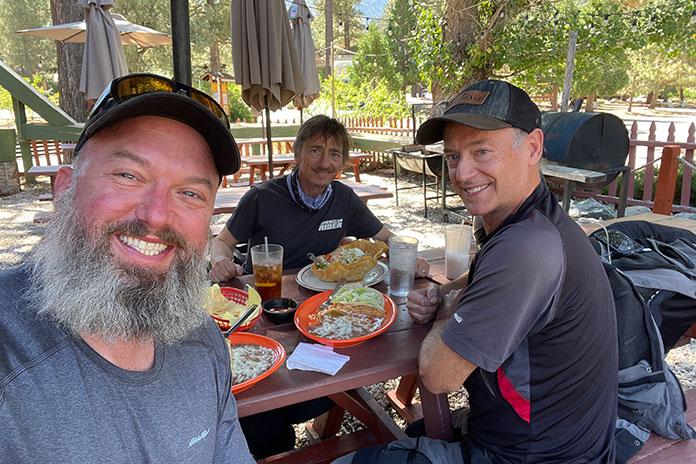
Wing was the photographer on my first Rider photoshoot. A month into my new job, Tuttle asked me to photo model on the Buell XB12XT for the June 2008 cover feature. Wing was patient with my inexperience, coaching me on how to ride 2 feet off the back bumper of a minivan for tracking shots.
Wing is also a perfectionist. He’ll call for as many photo passes as it takes – sometimes dozens of them in a single corner – to get the lighting, focus, angle, and other details just right. On the Buell shoot, I struggled to do repeated U-turns on a steep, narrow road for the cover shot. When I blew it one time and ended up in the weeds, he snagged a few embarrassing frames of me trying to extricate myself.
If I’m honest, I’ve never felt like the “talent.” I’m a rider with middling skills who is always trying to compensate for a lifelong habit of cocking my head to the left, inspiring a few riding buddies to nickname me “iLean.” The real talent is the guy behind the camera.
Another industry veteran I’m proud to call my friend is Kevin Duke. He started out at Motorcyclist in the late ’90s and was an editor at Roadracing World and Motorcycle Consumer News before taking the helm as editor-in-chief at Motorcycle-USA.com and then Motorcycle.com. When the EIC position opened up at our sibling publication, Thunder Press (which became American Rider last May), I was stoked when Duke landed the job.
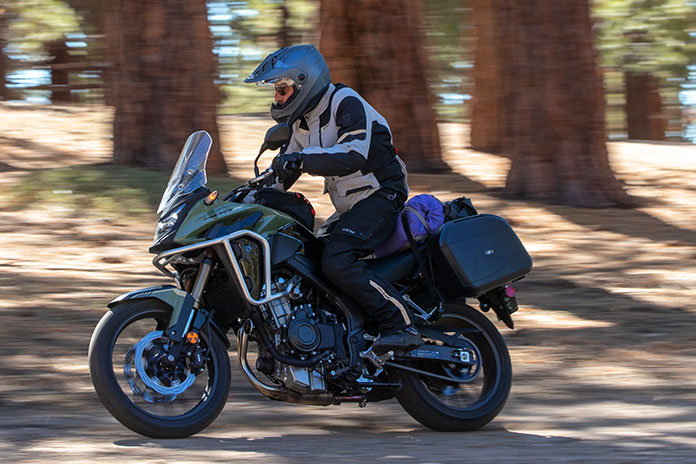
Over the years, I’ve attended dozens of press launches around the world with Duke. He was at my first press launch in Gatlinburg, Tennessee, in the spring of 2008, one that will forever live in infamy after one guy crashed (me), nearly every other journalist got a ticket, and one unlucky soul was hauled off in handcuffs. But that’s a longer story best told over a couple of beers…
In January 2013, Duke and I attended the global launch of the BMW R 1200 GS “water” Boxer in South Africa, an event that got cut short on the first day after a British motojournalist crashed and ultimately succumbed to his injuries.
Following the fatal incident, the mood at the launch was somber. We had a free day before our flight home, and Duke and I decided we needed to do something life-affirming. So we borrowed a BMW X1 and drove to Bloukrans Bridge, which, at 700 feet above the Bloukrans River, is the site of the world’s highest commercial bungee jump.
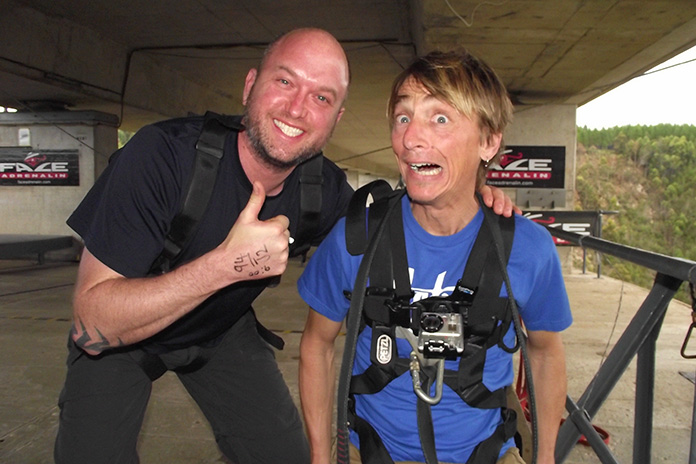
I was nervous during the entire two-hour drive there, hoping Duke would chicken out so I could do the same. But he never did, and we went through with it. The jump was two seconds of sheer terror followed by one of the most exhilarating experiences of my life.
Duke and I oversee a small editorial team as we work collaboratively on Rider and American Rider. Duke is a former racer and can wheelie anything on two wheels, but now that he runs an American V-Twin publication, his opportunities to ride bikes not made by Harley or Indian are limited.
“Hey Duke, we’re working on this adventure issue for Rider. How about you take the train up here to Ventura, and we’ll go for a ride? Bring your tent and sleeping bag.”
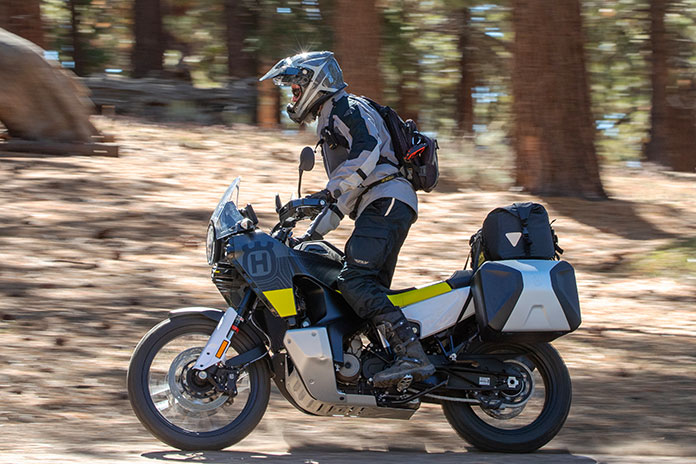
We both spend way too much time riding a desk chair, so he didn’t hesitate to accept my invitation. We had a pair of adventure bikes – a Honda CB500X and a Husqvarna Norden 901 – in the Rider garage, and we’d be joined by Wing on our Yamaha Tracer 9 GT long-termer.
Related Stories:
You know what they say about the best-laid plans. Duke missed his 6 a.m. train, pushing our departure back by two hours. Deadlines, a bum knee, and aftereffects of a Covid booster slowed down my last-minute packing, so by the time we hit the road it was noon.
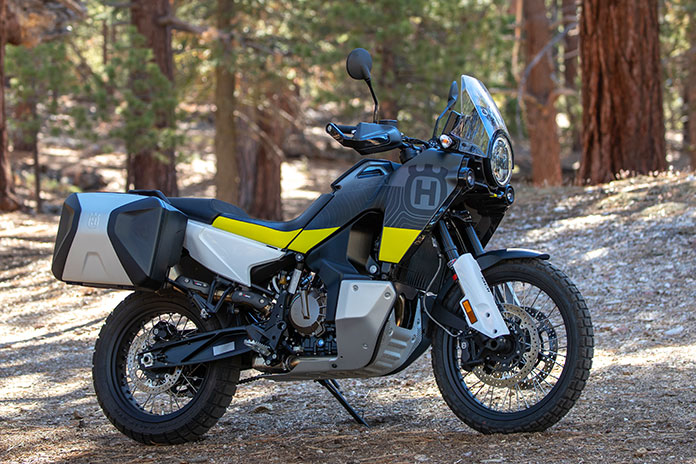
From my house, I can hit California Route 33 with a rock. It peels off U.S. Route 101 near the beach, and after winding through small hamlets like Casitas Springs and Oak View, Route 33 passes a biker hangout called the Deer Lodge and becomes one of the best motorcycling roads in Southern California, entering the wide-open spaces of Los Padres National Forest. I even wrote about the 33 in my cover letter when I applied to Rider back in 2008:
A motorcycling treasure sits in Rider’s backyard. The triple-crown of the Jacinto Reyes Scenic Byway (Route 33), Lockwood Valley Road, and Cerro Noroeste Road has it all: breathtaking vistas, peg-scraping switchbacks, fast sweepers, and top-gear straights.
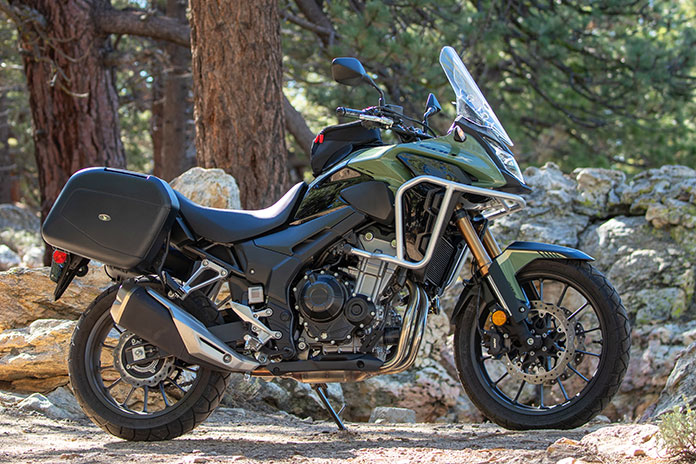
Even better, these roads have minimal traffic, especially on a Tuesday. “The Kevins” and I have ridden together many times, and we enjoy a brisk pace. We pushed our bikes hard and gnawed the chicken strips down to gristle. And then, out of nowhere, we received an unexpected gift.
Covering about 25 desolate miles from its junction with Route 33 to the small community of Lake of the Woods, Lockwood Valley Road has suffered a long history of neglect. It was in rough shape when I first rode it 15 years ago, and over the years, it has only deteriorated further. One tricky section is a tangled knot of first-gear corners that go through narrow desert canyons and washes. On one of my first test rides through Lockwood Valley, I dumped a $20,000 BMW R 1200 HP2 Megamoto in a patch of sand that caught me off-guard, cracking one of the magnesium cylinder heads and nearly putting my dream job at risk.
As the Kevins and I turned onto Lockwood Valley Road, we saw that the top layer of pavement had been scraped off. A few miles later, we came upon the paving crew. And then … nirvana!
All the twists and turns that were such a challenge when the pavement was cracked, patched, potholed, and strewn with sand and rock-slide debris became a jet black, eerily smooth roller coaster like those plastic Hot Wheels tracks you could twist into acrobatic shapes and loops. We were gobsmacked.
An army marches on its stomach, and so does a crew on a photoshoot ride. We’re all remote workers these days, so rides like these give us a chance to see each other face-to-face and have some laughs. While we sat around a picnic table and scarfed down an XL combination pie at Mike’s Pizza, Duke revealed that Wing had also been the photographer on his first shoot – 25 years ago to the month. We commiserated about the recent heat wave, inquired about Duke’s and Wing’s kids, and discussed the length of my beard. By December, I should be eligible for a part-time gig as Santa.
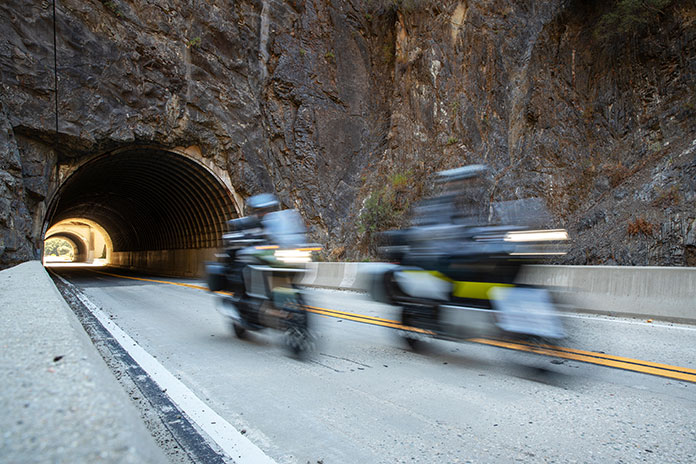
We waddled out to the bikes rubbing our distended bellies, saddled up, and made our way through the alpine community of Pine Mountain Club before spiraling our way up Cerro Noroeste Road to the top of its namesake mountain. Cerro Noroeste is surrounded by the Chumash Wilderness, and sprawled across its 8,300-foot summit under the shade of enormous Jeffrey pines is Campo Alto Campground.
When my brother and I first camped at Campo Alto back in ’06, we had embraced our Tennessee heritage, bringing little more than a box of fried chicken, a bottle of Jack Daniel’s, and bed rolls tossed in the bed of my F-150. We’ve taken Rider staff camping trips to Campo Alto, so it seemed a fitting location for our most recent escape. A week after Labor Day on a Tuesday, it was deserted.
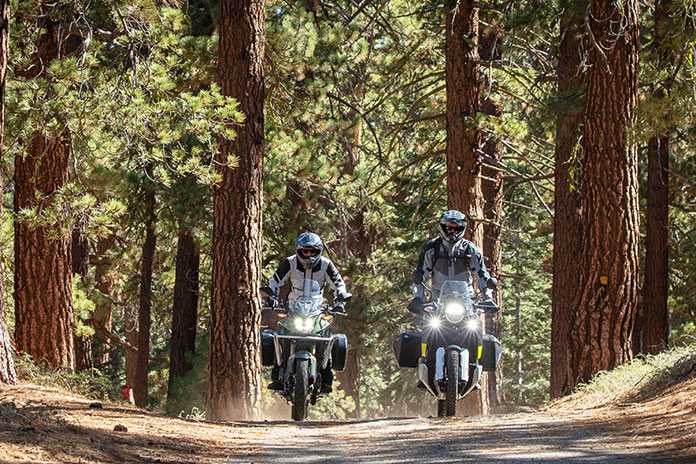
As the Kevins set up camp, I rode down to the general store in Pine Mountain Club and stocked up on beer, chips, sandwich fixin’s, and firewood. We soon had a toasty blaze going and cold cans of IPA in our hands. Heavy rains had spun off from Cyclone Kay and soaked the mountains only a day or two before, and the petrichor mixed with the smell of pine and wood smoke.
“Hard to believe we’re so close to home,” Wing said. “Feels like we’re a million miles away.”
We had ridden less than 100 miles since leaving Ventura, and it was probably half that to the campground as the crow flies. But we were on the top of a mountain surrounded by wilderness, and there was no one around but us.
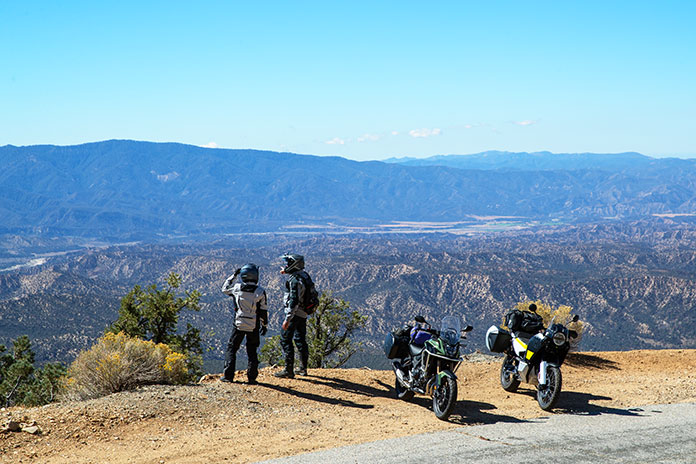
After the sun went down, it dropped into the 40s, so we huddled close to the fire, sipped some 10-year-old Henry McKenna bourbon, and told war stories about press launches, photoshoots, close calls, and embarrassing moments. (Yes, I told the Gatlinburg story.)
Ours was an adventure with a little “a.” We didn’t do much preparation or planning, nothing went wrong, and we were back home in less than 36 hours. But we slept in tents under the stars, had fun, and asked, “Why don’t we do this more often?” Even a brief escape with good friends does wonders for the soul.
The post Motorcycle Camping on a Honda CB500X and Husqvarna Norden 901 first appeared on Rider Magazine.
Source: RiderMagazine.com
We likely won’t see the 790 Adventure Stateside until 2024.
Begin Press Release:
KTM’s expanding worldwide production network has given the travel segment the juiciest ‘throwback’ with the reinvigoration of the KTM 790 ADVENTURE: the original searing combo of torquey power, lithe handling and utter versatility but refreshed for 2023.
In 2018 the bike set the standard for a mix of energizing performance and empowerment. It defined the midweight motorcycling travel sector and a niche created by KTM. Riders could gas the KTM 790 ADVENTURE across either tarmac or the trail with utter commitment and confidence, knowing they would have the goods and specifications to manage a wide range of conditions or landscapes. Come 2022 and there was momentum for an overhaul of this ideal ‘first taste’ foil for people curious or anxious for adventure.
The 2023 KTM 790 ADVENTURE was re-designed and redrafted in Mattighofen, Austria but the production run will be carried out by KTM’s close and potent partner, CFMOTO, with their first-class facilities in China and to the highest standard. The process will be supervised by KTM staff on the ground. The transcontinental cooperation is not the first for KTM and will ensure the adventure spirit can feed directly into the furthest corners of the globe.
The initial KTM 790 ADVENTURE twin cylinder LC8c motor was memorable for the torque and responsiveness as well as the remarkable feeling of inertia it provided. For the bike’s comeback KTM wanted even more ‘rideability’ from the LC8c that still pumps out 95 hp at 8,000 rpm and 88 Nm at 6,500 rpm but also tweaks that would meet the criteria for Euro 5 emissions targets.
The 2023 KTM 790 ADVENTURE is now more stable at constant speed and has gained more cornering poise thanks to a 20% increase of rotating mass; an alteration that hasn’t compromised the highly rated agility of the motorcycle. Reworked throttle bodies bring a cleaner and more efficient connection due to the enhanced combustion, and the ‘knock control’ sensor affords a higher state of ignition and better capacity for low octane fuel; a reassuring characteristic for the different qualities of gasoline found while travelling. A reconfigured optional Quickshifter+ enables faster shifting; all of which can be heard through the very latest exhaust system with 2023 catalytic converter and pre-muffler. This is one of the largest modifications to ensure this vibrant generation of the KTM 790 ADVENTURE will be an impeccable choice for moving in, around and then outside of the city limits. The 15,000 km service intervals remain in concrete.
The dependability of the KTM 790 ADVENTURE is hiked with the reworked Power Assist Slipper Clutch with new friction plates and the engine breathes freer with a new airbox. The bike also benefits from the latest 6D sensor, otherwise known as the Inertia Management Unit, that can be found on larger KTM siblings like the KTM 890 ADVENTURE and KTM 1290 SUPER ADVENTURE models. This sophisticated device informs the Cornering Motorcycle Traction Control and other aspects such as ABS, Motor Slip Regulation and the administration of Ride Modes. In terms of features the KTM 790 ADVENTURE holds very similar billing to its larger sibling: the KTM 890 ADVENTURE. ABS programs now automatically switch between the Ride Modes, removing the need for more configuration. KTM has installed an innovative ‘DEMO’ function on the 2023 KTM 790 ADVENTURE; owners can trial the full slew of optional riding extras for the first 1,500 km before deciding which settings they’d like to purchase and keep.
Refined feeling comes from the ‘23 spec 43 mm WP APEX Suspension fork at 200 mm travel with the same allotment for the shock, which has preload adjustability. The construction of the CroMo frame, in which the engine is used as a stressed member, guarantees a robust and stiff constitution for pillion and load-carrying as well as clever positioning of the rear shock for a low seat height (840 mm).
A 20-liter tank and potential 450 km fuel economy broadens the horizons of even the hardest adventure rider. For all the time spent in the comfy 2-piece saddle (which can be swapped and augmented through KTM’s PowerParts assortment for single or heated units) the 2023 KTM 790 ADVENTURE provides even more concessions to the eager traveler.
The tank follows the flow and lines of the bike where a new front mask gives way to an integrated fairing. The section still permits prime contact and the sensation of centralization that the rider can enjoy but is tougher and bolstered for the addition of mounts and other GPS devices if necessary. A new larger, higher screen provides more wind protection. The lights are full LED sets and the dashboard view is brighter and better with the 5” TFT reacting to ambient lighting and utilizing a redesigned menu system of new infographics for faster and easier customization. Syncing the KTMConnect App will now lead to even more beneficial navigational and travel options, such as profiling the ‘top ten’ calls and contacts and adjusting the parameters of turn-by-turn guidance on the go.
As with the forerunner to the 2023 edition, the KTM PowerParts range is plush with KTM 790 ADVENTURE components for protection or aesthetic add-ons. Owners won’t have to consider extra defense against hits and dents to the front of the bike however thanks to the light aluminum engine protector, fitted as standard. The plastics (injected molded with graphics for more resistance) have also been reshaped to guard the tank and seat against unwanted knocks.
Don’t forget the distinctive KTM ADVENTURE looks: the 2023 KTM 790 ADVENTURE comes into two dynamic and catching colorways to mark the ‘second coming’.
// Superb performance and technical specifications in relation to price and segment competition
// Austrian created and designed, Chinese-built to the highest production standards
// Bodywork and ergonomic refinements for same unbeatable handling and light sensation
// EURO 5 emissions ready LC8c engine with more rideable power and behavior
// New screen, front mask, 5” TFT display with redesigned menu system
// New PIRELLI SCORPION STR tires with large tread blocks for more offroad focus
The post KTM Revives the 790 Adventure appeared first on Motorcycle.com News.
Originally built for the racetrack, the RPHA 11 Pro motorcycle helmet from HJC is designed with an aerodynamic shell structure for performance at high speeds.
See all of Rider’s motorcycle helmet reviews here.
The Premium Integrated Matrix shell composition is impact-resistant and lightweight with reinforcement materials that include carbon and carbon-glass hybrid fabric.
The enlarged eyeport provides increased view in a tucked position, making it perfect for sport riders.
The shield offer 95% UV-A & B protection, and an additional 2D dark smoke shield is included. The quick-release shield system offers a simple and secure tool-less system to quickly remove the shield from your helmet.
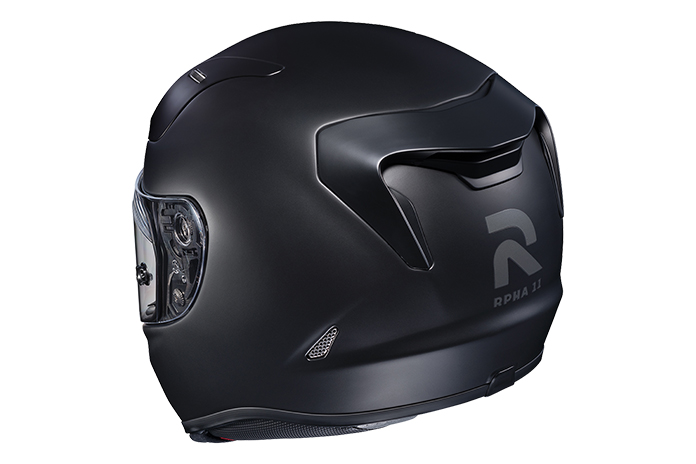
The RPHA 11 Pro is DOT and ECE approved. Other safety features include reflective patches on the rear neck area and an emergency release cheek pad system for safe and quick helmet removal. The RPHA 11 Pro is available in four solid colors and 13 graphics in sizes XS-2XL. Pricing ranges from $399.99-$629.99.
The post New Gear: HJC RPHA 11 Pro Motorcycle Helmet first appeared on Rider Magazine.
Source: RiderMagazine.com
With their uniquely shaped mirror head and sleek stem, the Phoenix 1 mirrors from Highsider are designed with both elegance and aerodynamics in mind.
See all of Rider’s Parts & Accessories reviews here.
Constructed from high-quality aluminum, these mirrors are compatible with most Harley-Davidson models with perch-mount applications, Indian 2014+ models, and metric applications.
They are sold in pairs and come with two Harley-Davidson adapters, two right-hand thread adapters, and one adapter for left-hand threading. Mirrors are 4.92 inches wide by 3.34 inches high.
Stand out from the crowd with mirrors that are one of a kind. The Phoenix 1 mirrors are available in Satin Black and Chrome surface finishes for $69.99.
The post New Gear: Highsider Phoenix 1 Mirrors first appeared on Rider Magazine.
Source: RiderMagazine.com
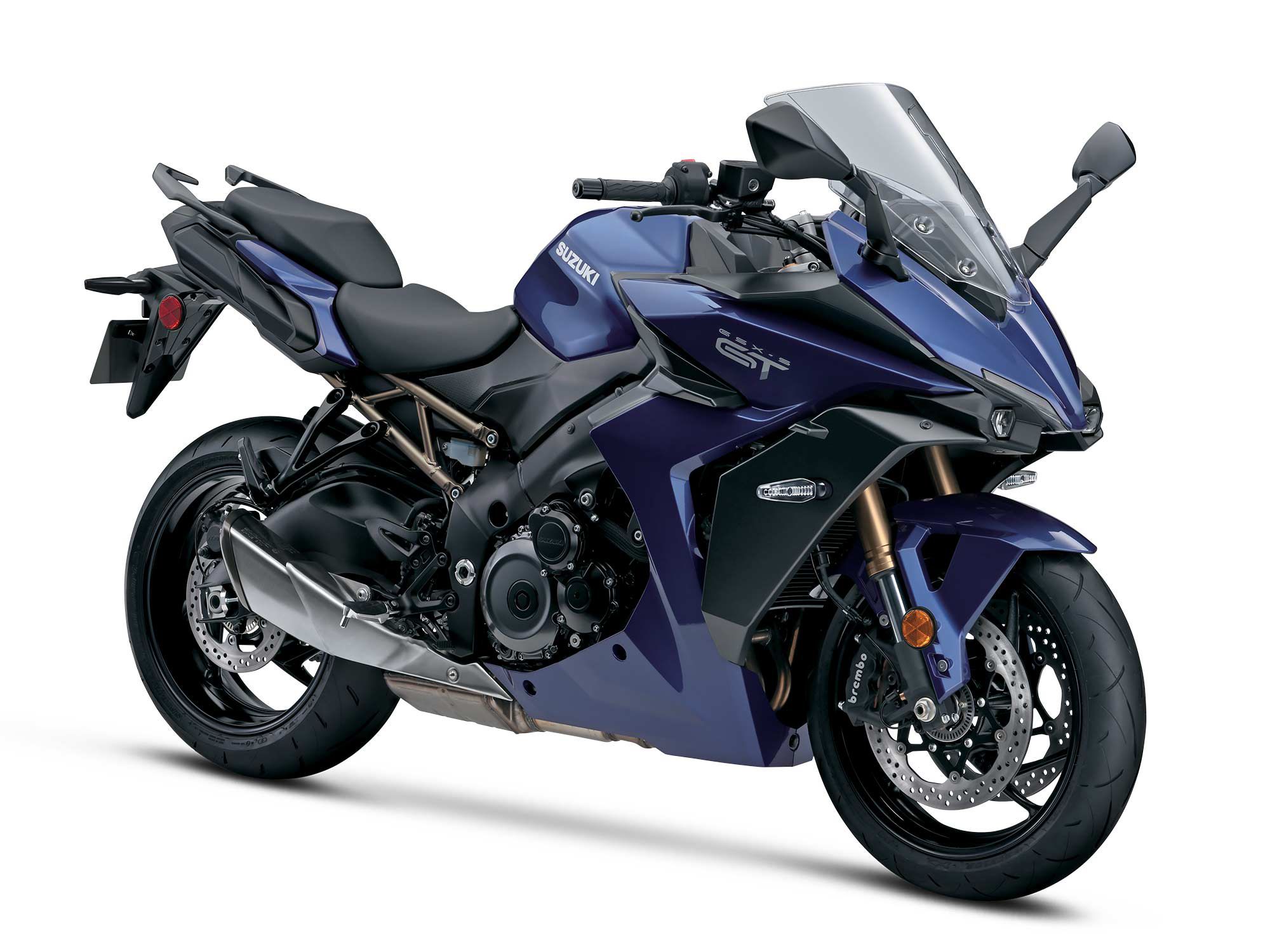
Suzuki carries its new sport-touring models, the GSX-S1000GT and GSX-S1000GT+, into 2023 unchanged. However, riders will be able to select from between Metallic Triton Blue or Glass Sparkle Black colors in the GT+ trim. The standard GT will be available in Metallic Reflective Blue only. The GT will start at $13,349 while the GT+ will be priced at $14,099.
Both models are still fresh, however, having been first introduced to the market for the 2022 model year.
Each carries a GSX-R1000-derived engine that delivers ample pull throughout the rev range, though it’s specifically tuned to provide the best performance in the low- to midrange. The complete Suzuki Intelligent Ride System allows riders to choose between three drive modes and five traction control modes. A bidirectional quickshifter makes moving through the gearbox a breeze and the clutch assist system makes traditional shifting maneuvers smooth. A 6.5-inch TFT instrument display provides all the information you need.
The bikes are suspended by fully adjustable KYB kit front and back and Brembo hardware provides stopping power.
Side cases are standard on the GT+ but can easily be added to the GT as well. A larger touring windscreen is also available as an upgrade if riders are looking for a little more generous protection.
2023 Suzuki GSX-S1000GT & GSX-S1000GT+ Technical Specifications and Price
| Price: | $13,349/$14,099 (GT+) |
|---|---|
| Engine: | 999cc, DOHC, liquid-cooled four-cylinder; 16 valves |
| Bore x Stroke: | 73.4 x 59.0mm |
| Compression Ratio: | 12.2:1 |
| Fuel Delivery: | EFI w/ ride-by-wire |
| Clutch: | Wet, multi-disc w/ SCAS |
| Transmission/Final Drive: | 6-speed/chain |
| Frame: | Twin-spar aluminum |
| Front Suspension: | 43mm KYB USD fork, fully adjustable; 4.7 in. travel |
| Rear Suspension: | Linkage-type shock, spring preload and rebound damping adjustable; 5.1 in. travel |
| Front Brake: | Brembo 4-piston Monoblock calipers, floating 310mm discs w/ ABS |
| Rear Brake: | Nissin 1-piston caliper, 240mm disc w/ ABS |
| Wheels, Front/Rear: | Cast aluminum; 17 in. |
| Tires, Front/Rear: | 120/70-17 / 190/50-17 |
| Rake/Trail: | 25.0°/3.94 in. |
| Wheelbase: | 57.5 in. |
| Seat Height: | 31.9 in. |
| Fuel Capacity: | 5.0 gal. |
| Claimed Wet Weight: | 498 lb. |
| Available: | Early 2023 |
| Contact: | suzukicycles.com |
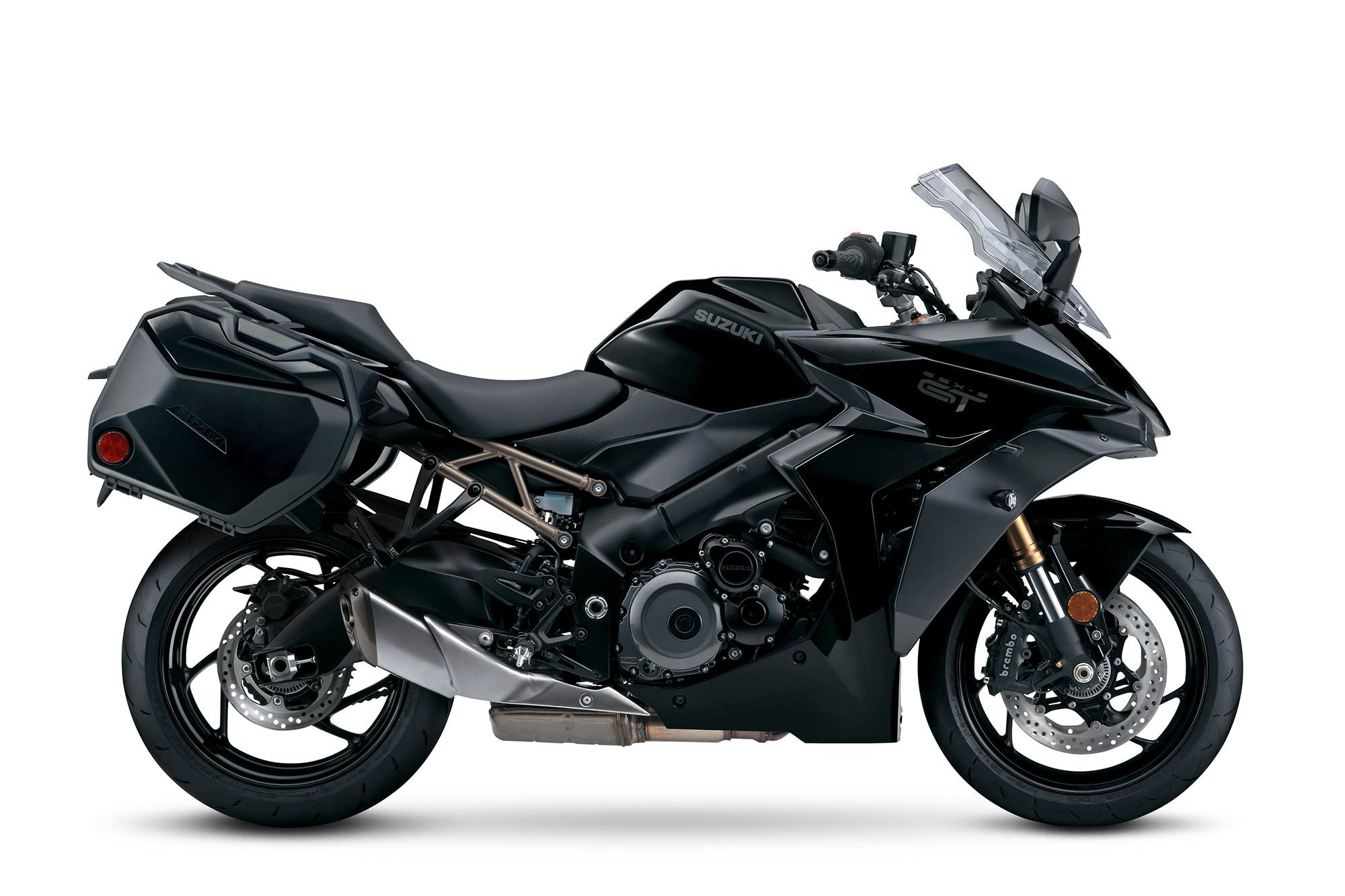
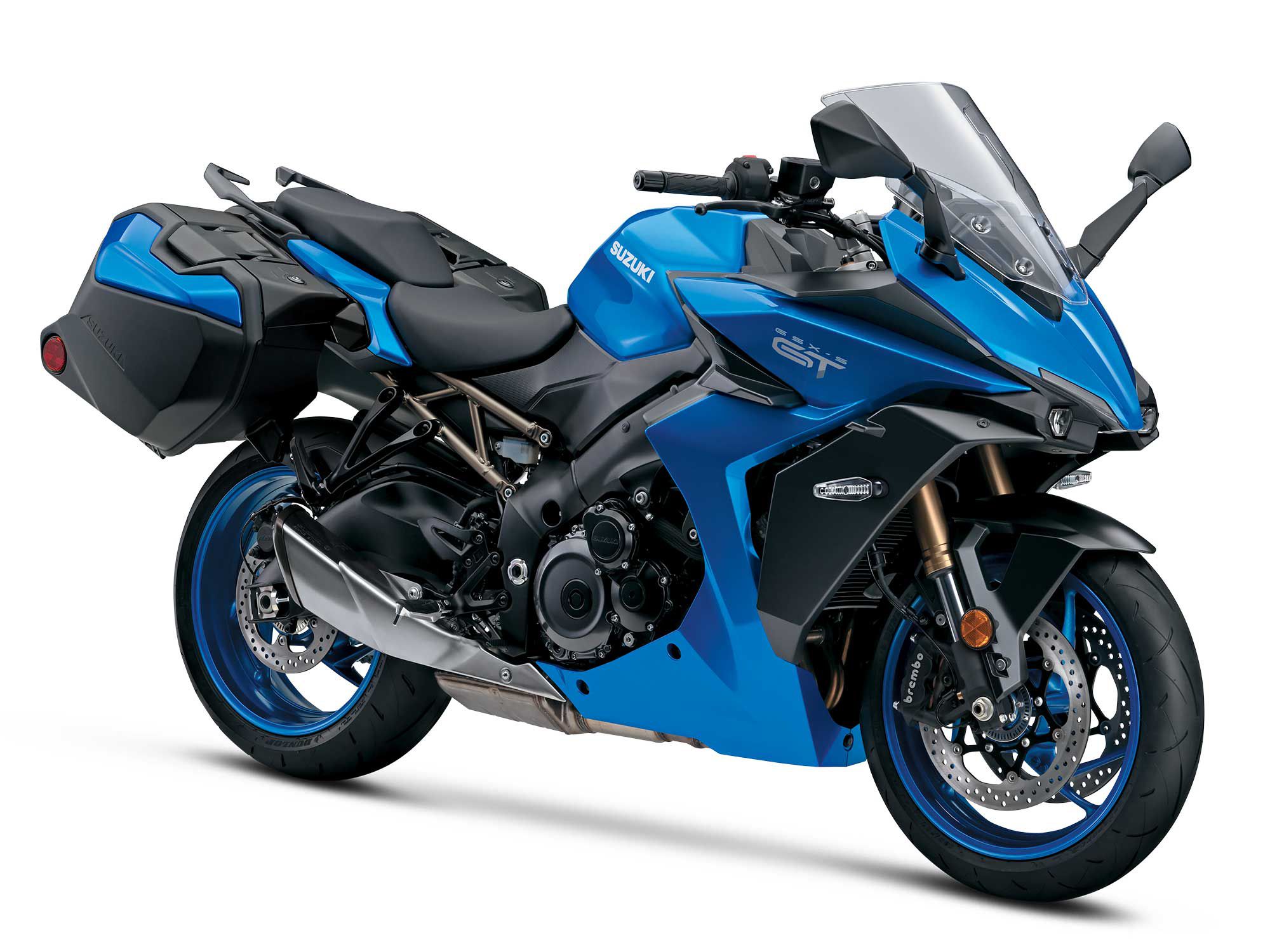
Source: MotorCyclistOnline.com
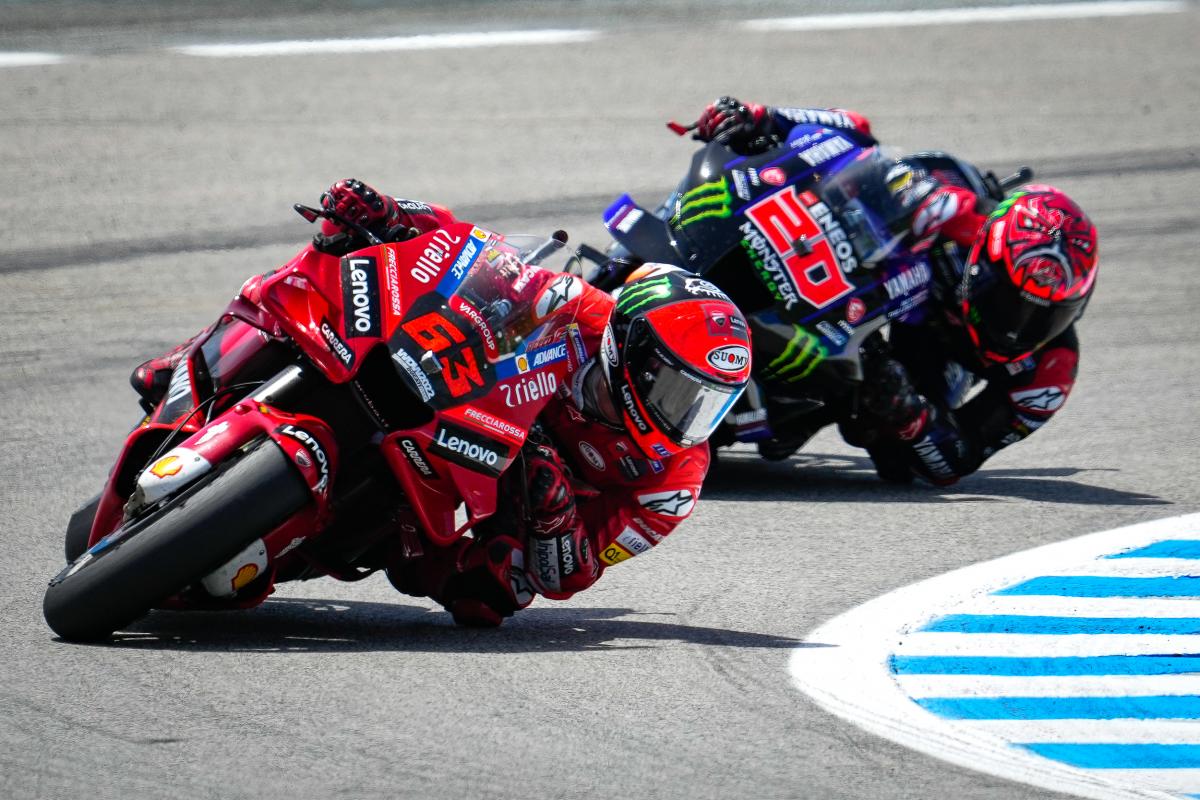
Continuing his rich vein of form, Aleix Espargaro (Aprilia Racing) took P3 for consecutive podiums and his third of the season. The highlight of his race came with a double overtake on Jack Miller (Ducati Lenovo Team) and Marc Marquez at the final corner, while the Repsol Honda rider, who earlier in the weekend was reunited with Dani Pedrosa, also pulled off a superhuman save at the Jorge Lorenzo corner moment.
Source: MotoGP.com – Read Full Article Here
I think most people will agree on this one. 🙂 Final episode of the season guys.
>> Link below <<

Source: Jonathan Rea On Facebook
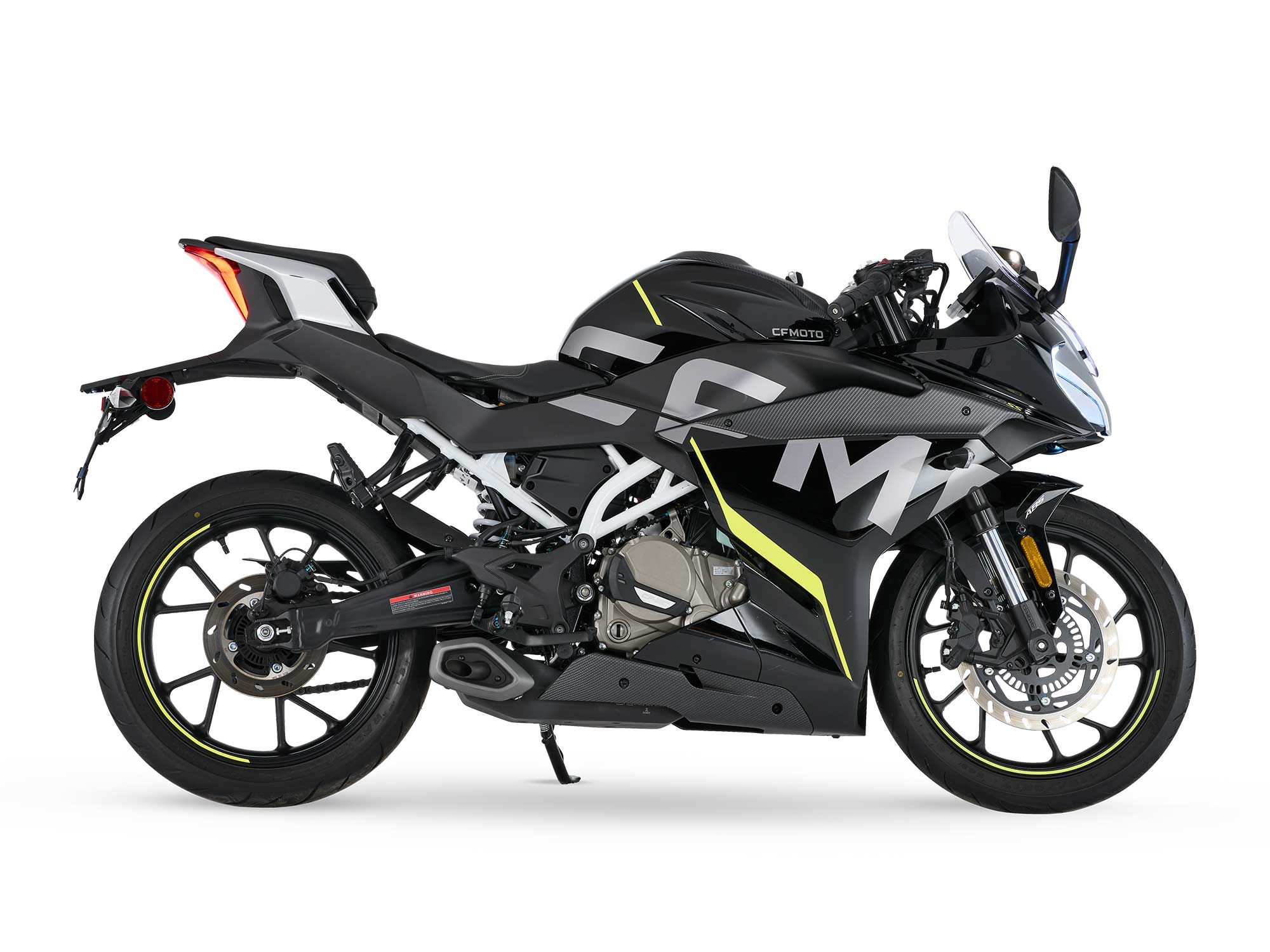
Ups
Downs
Verdict
As far as entry-level sportbikes go, CFMoto’s 300SS is a powerhouse of value and performance. With a range of features and attractive styling, the 300SS is a worthy competitor in the US market, especially considering the bike’s modest $4,299 price tag.
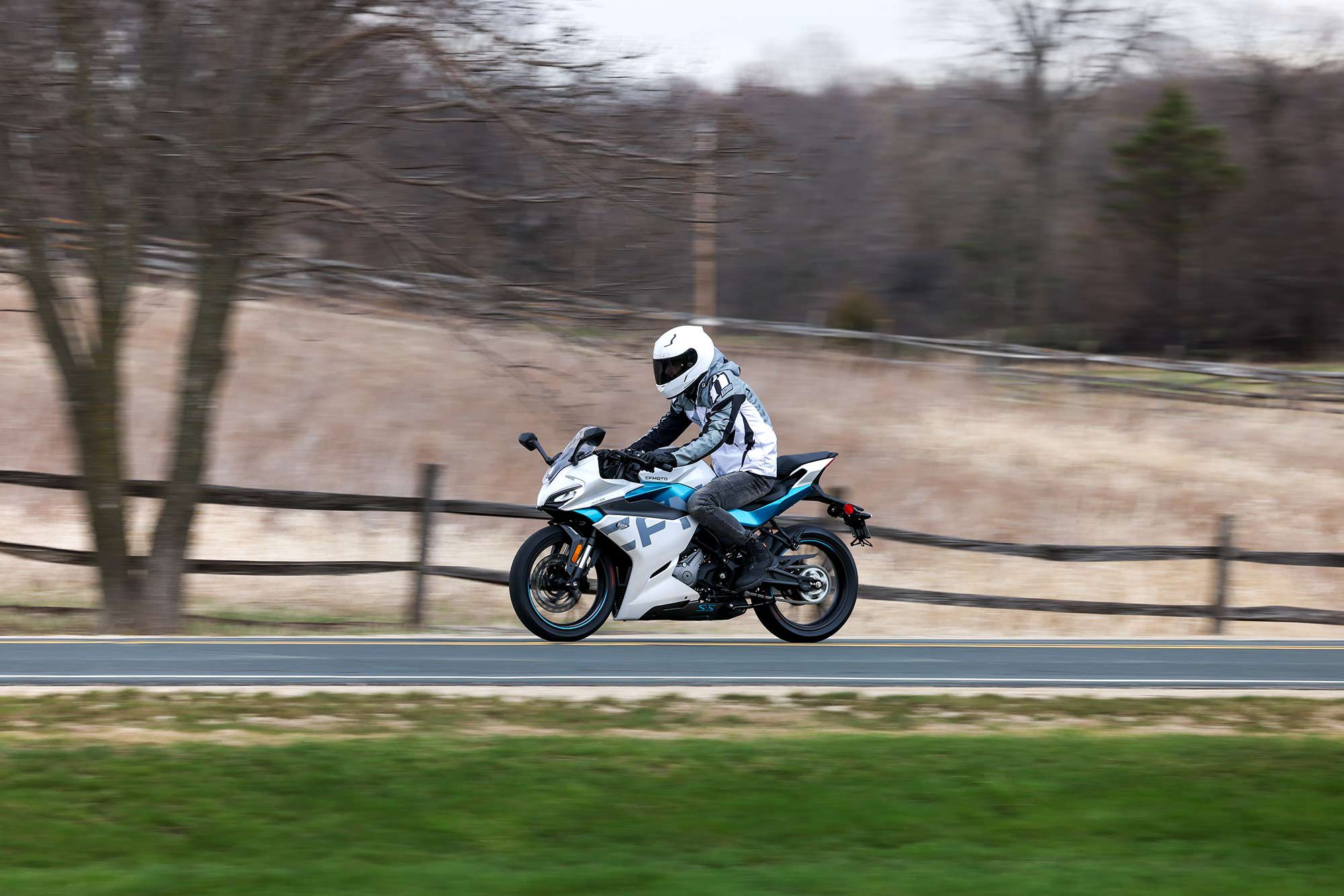
Overview
Chinese manufacturing has historically been clouded by such things as poor-quality metals, imprecise castings and engine tolerances, poor quality control, and lackluster reliability, but even in 2022, is that still the case? If CFMoto’s new lineup of motorcycles is any indicator, it’s safe to say that these once-plausible claims are more of a fallacy in the current day and age.
Hailing from Hangzhou, China, CFMoto opened the doors to its Plymouth, Minnesota–based US headquarters in 2007 and hasn’t looked back. The brand originally specialized in ATVs and side-by-sides. However, upon noticing a massive gap in the motorcycle market that’s been long dominated by the Japanese Big Four and European manufacturers, CFMoto launched its line of bikes, including the top-selling 300SS.
This entry-level 300SS sportbike is nothing short of impressive, especially when considering the low price tag, peppy 292cc single-cylinder DOHC engine, standard TFT display, and stout build quality. Time will tell if the company has what it takes to change the market’s perception of Chinese motorcycles, but bikes like the 300SS have certainly started a shift in opinion.
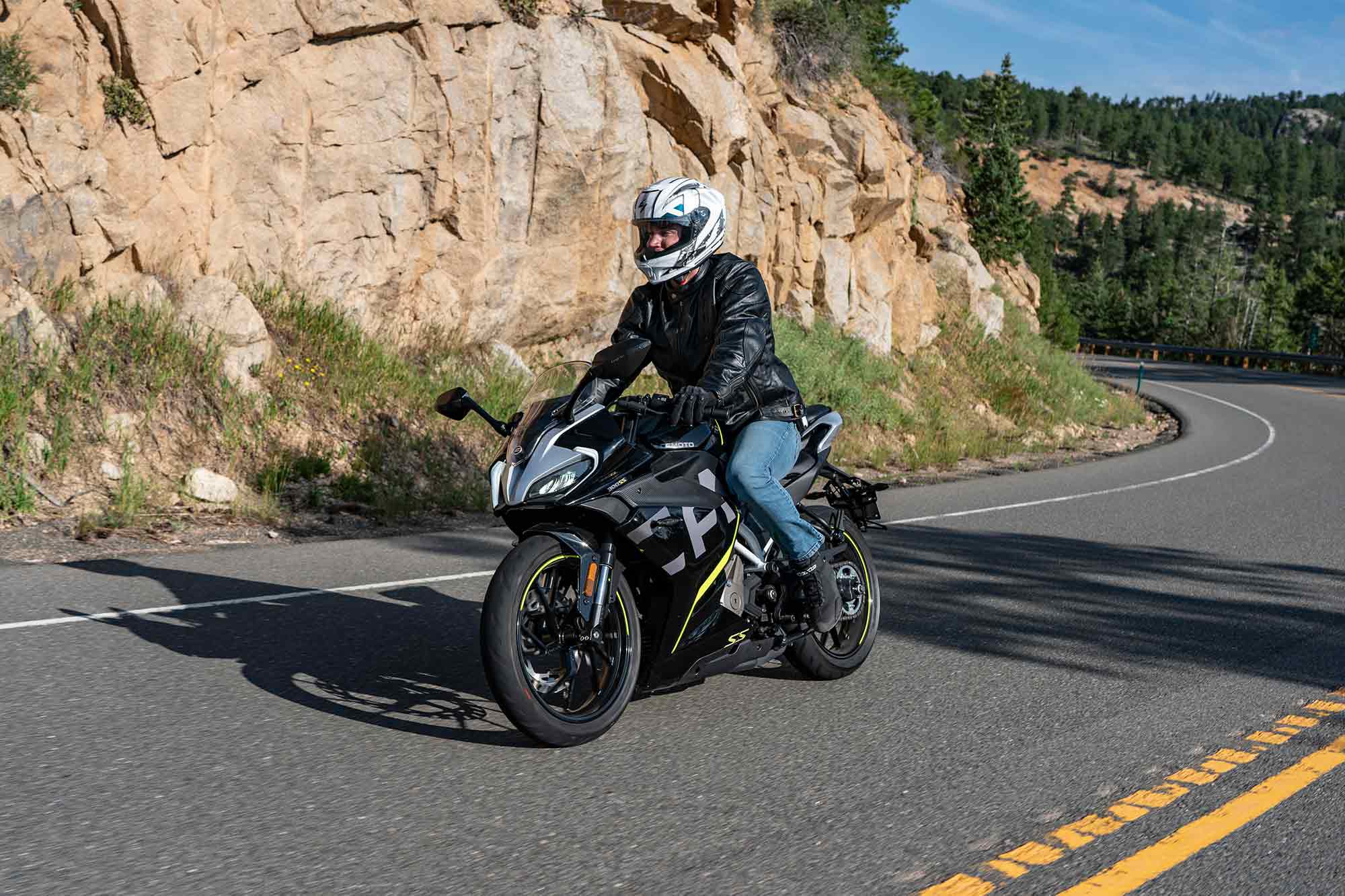
Updates for 2022
As this is the first year of production for the 300SS, there are no updates to be found.
Pricing and Variants
The 300SS is offered alongside CFMoto’s similarly spec’d 300NK naked bike, which could be considered a variation of the platform. However, for those looking for a fully faired, small-displacement sportbike the 300SS is CFMoto’s sole option. Colors are the only notable options, the 300SS being offered in Nebula White and Nebula Black.
There is a slight cost increase over the 300NK thanks likely to the added costs of bodywork. While the NK is priced at $3,999, the 300SS crosses the $4,000 mark with an MSRP of $4,299.
Competition
There are no shortage of options in the small-displacement sportbike category, with nearly every manufacturer offering a beginner-friendly entry into the world of motorcycling.
Options include the Honda CBR300R ($4,899), Yamaha YZF-R3 ($5,499), Kawasaki Ninja 400 ($5,299), Suzuki GSX250R ($4,999), and KTM RC 390 ($5,799). If BMW’s G 310 RR comes to the US, that will be part of the competition as well.
With similar specifications and a significantly lower price tag, CFMoto’s 300 series isn’t designed to just compete in the current market but to undercut other bikes in its class. After all, why spend an extra $1,000 on a bike with similar features and a warranty? That’s CFMoto’s concept.
One thing to keep in mind is that each manufacturer takes a slightly different approach to the category, with bikes like the KTM RC 390 and Kawasaki Ninja 400 designed to offer a little extra performance for riders who may want to hit the racetrack.
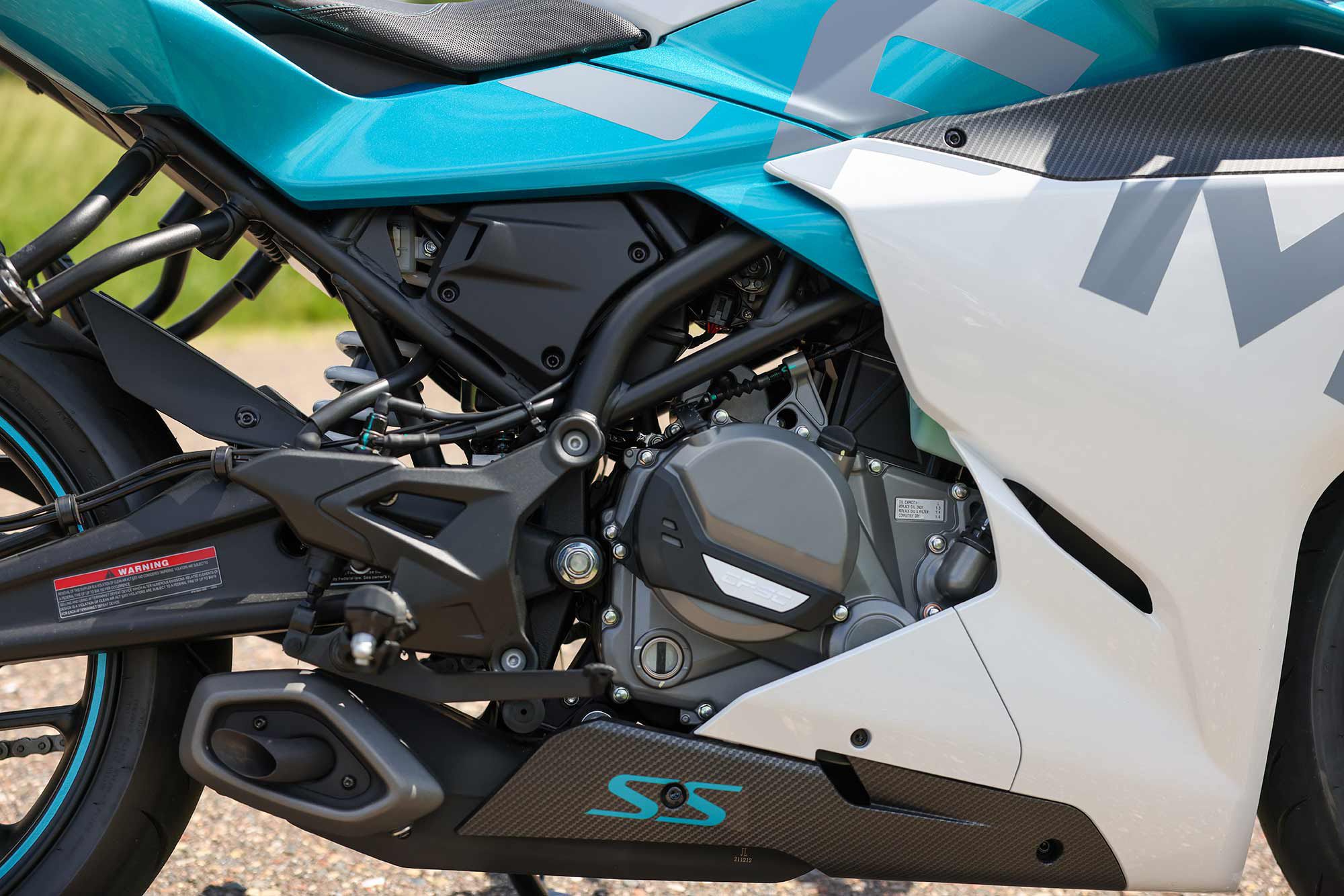
Powertrain: Engine, Transmission, and Performance
The 300SS is equipped with a 292cc DOHC single-cylinder engine with a Bosch EFI handling fuel management. All 29 hp and 18.7 lb.-ft. of torque are routed through a six-speed transmission with a slipper clutch, piloting the bike to a moderate top speed of 87 mph.
While not blisteringly fast, the bike has plenty of pep for cruising around town and having some fun on backroads; gearing is also effective for any riding style, making the 300SS a versatile and enjoyable entry-level machine.
In terms of displacement, the 300SS is closer to the Honda CBR300R and Suzuki GSX250R, which take a more modest approach compared to the larger-displacement Kawasaki Ninja 400 and even KTM’s RC 390.
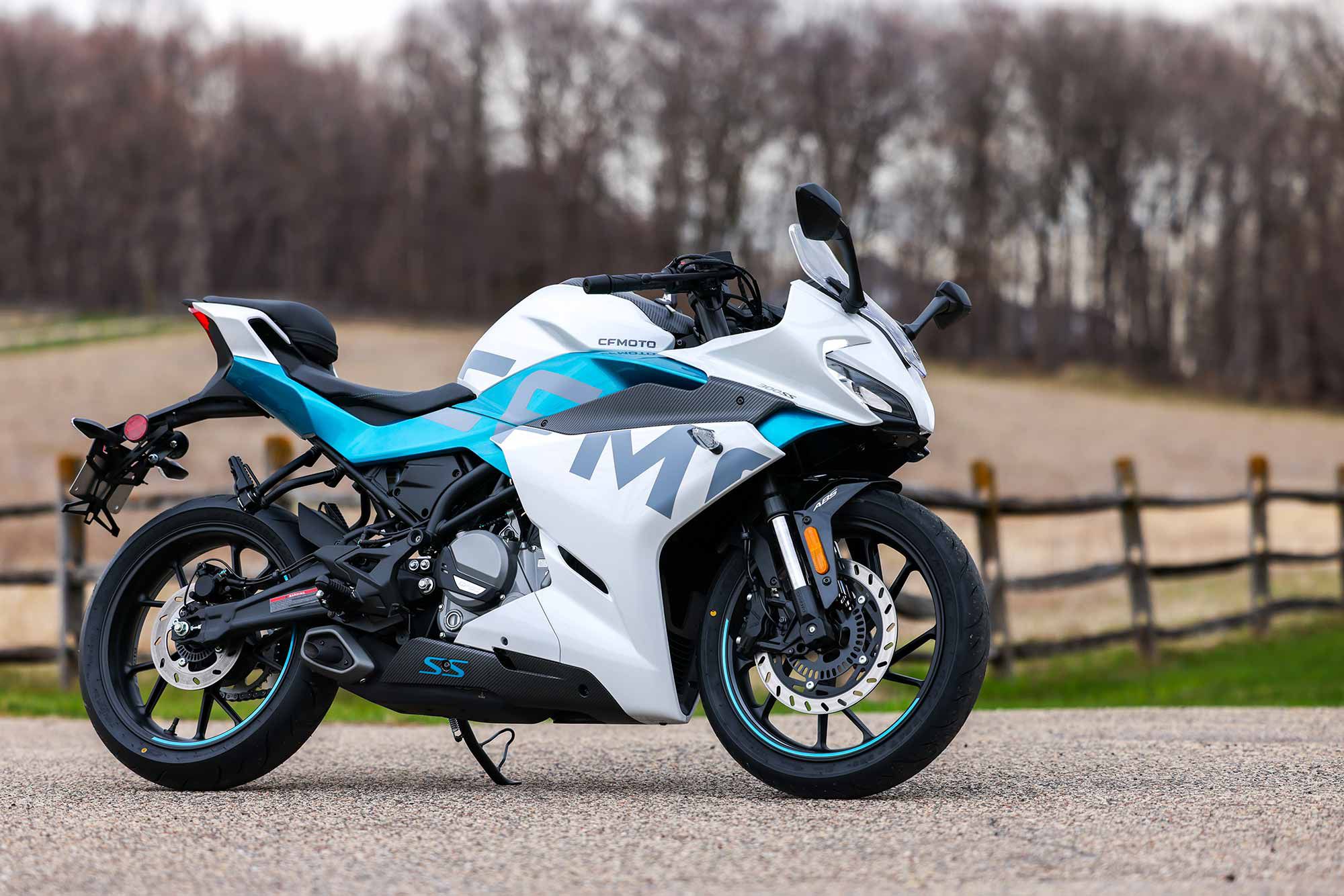
Chassis/Handling
Comfort and predictable performance are the name of the game in the lightweight category, where there’s less emphasis on an ultra-rigid chassis more suited for racing. CFMoto’s uniquely designed steel trellis frame takes that into account, balancing things like weight and rigidity. This is not the only steel trellis frame in the class, but it still stands out among the competition.
Similar emphasis is placed on the suspension, which CFMoto claims was designed to be lightweight but rigid, with a progressive-rate springs in the fork. The shock uses an IFP (Internal Floating Piston) and has five-click preload adjustability.
There’s a decent blend of sporty stiffness and comfortability out of the box. However, the 300SS’s clip-on handlebars make managing quick turns more difficult and clumsy than the naked offering.
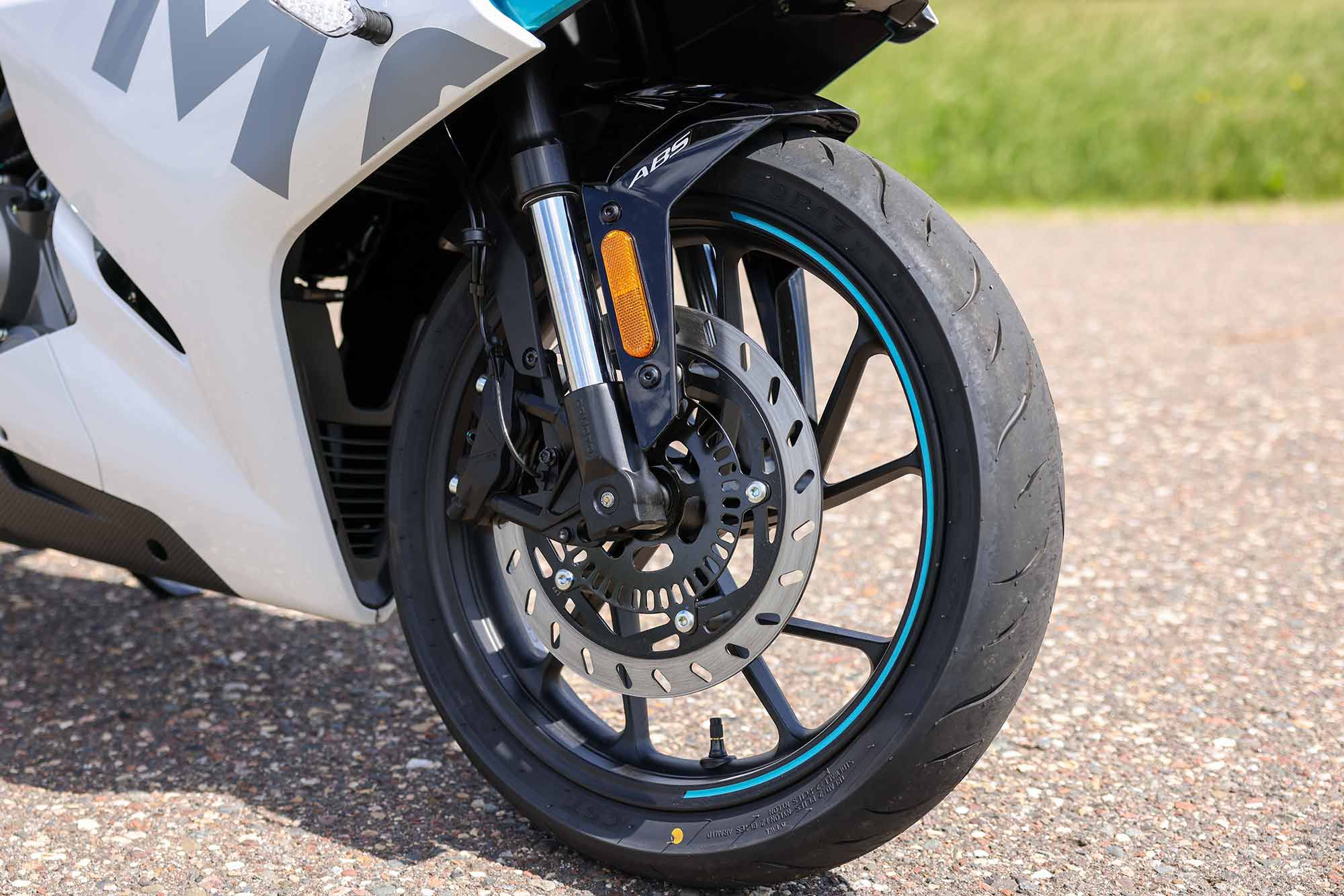
Brakes
Braking on the 300SS is more than satisfactory, especially when coupled with the bike’s low 364-pound curb weight (though 31 pounds more than the naked 300NK).
The SS sports a four-piston caliper and 300mm disc up front, and a 245mm single-rotor setup at the rear, providing plenty of clamping force to control the bike through corners and harsh braking. With the addition of standard, dual-channel ABS, braking is controlled and predictable in all conditions.
Fuel Economy
There is currently no Cycle World real-world fuel economy data.
Ergonomics: Comfort and Utility
Due to the low height of the clip-on handlebars and the long reach between them and the seat, the 300SS forces riders into an uncomfortable seating position. Coupled with the awkwardly spaced mirrors, the everyday drivability of the 300SS leaves a bit to be desired.
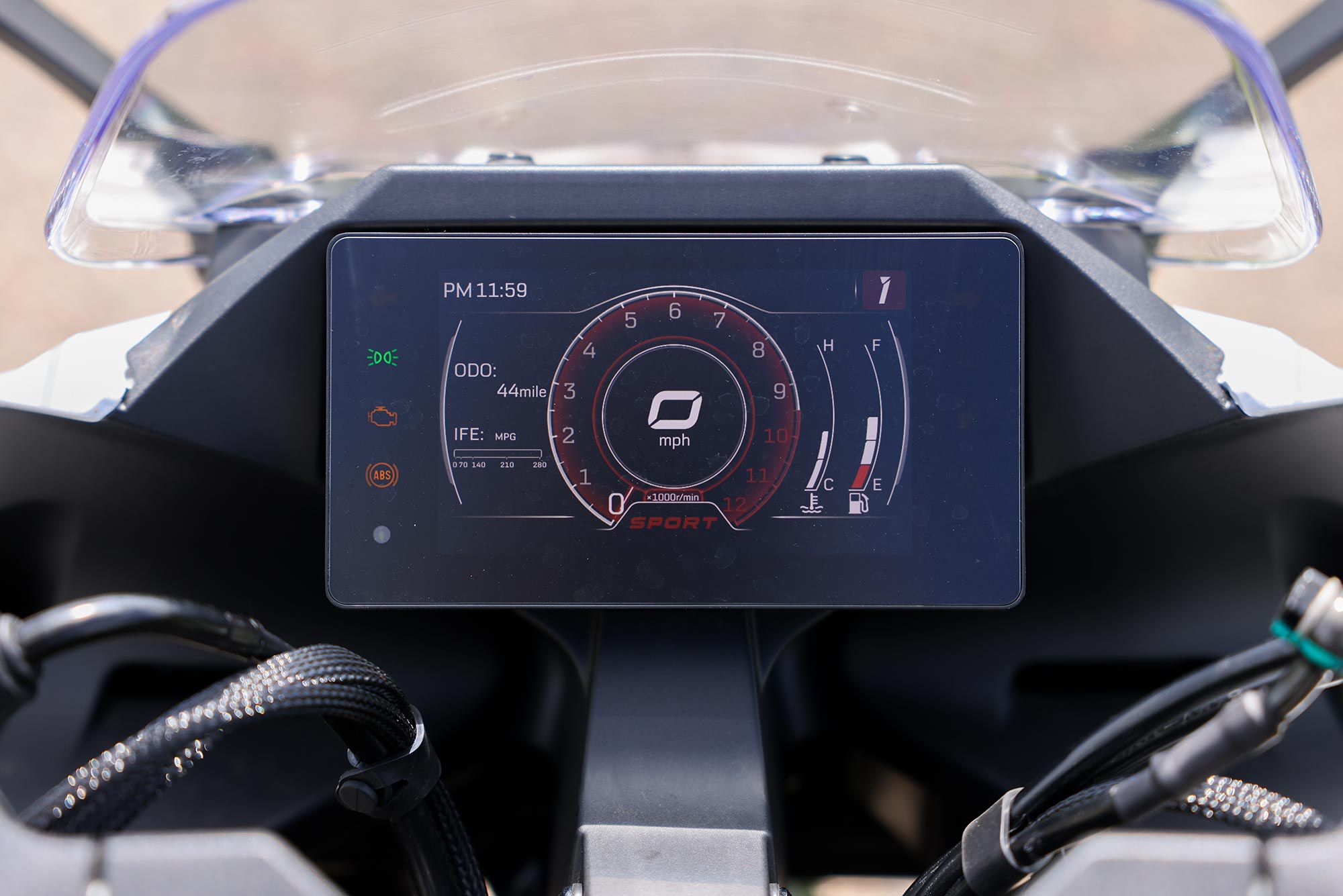
Electronics
The CFMoto 300SS is no stranger to technology, as it comes standard with everything from factory dual-channel ABS to a full-color, 5-inch TFT display. LED headlights, taillights, and signal lights are standard, providing crisp and accurate light output.
Warranty and Maintenance Coverage
The 300SS comes standard with CFMoto’s two-year factory warranty.
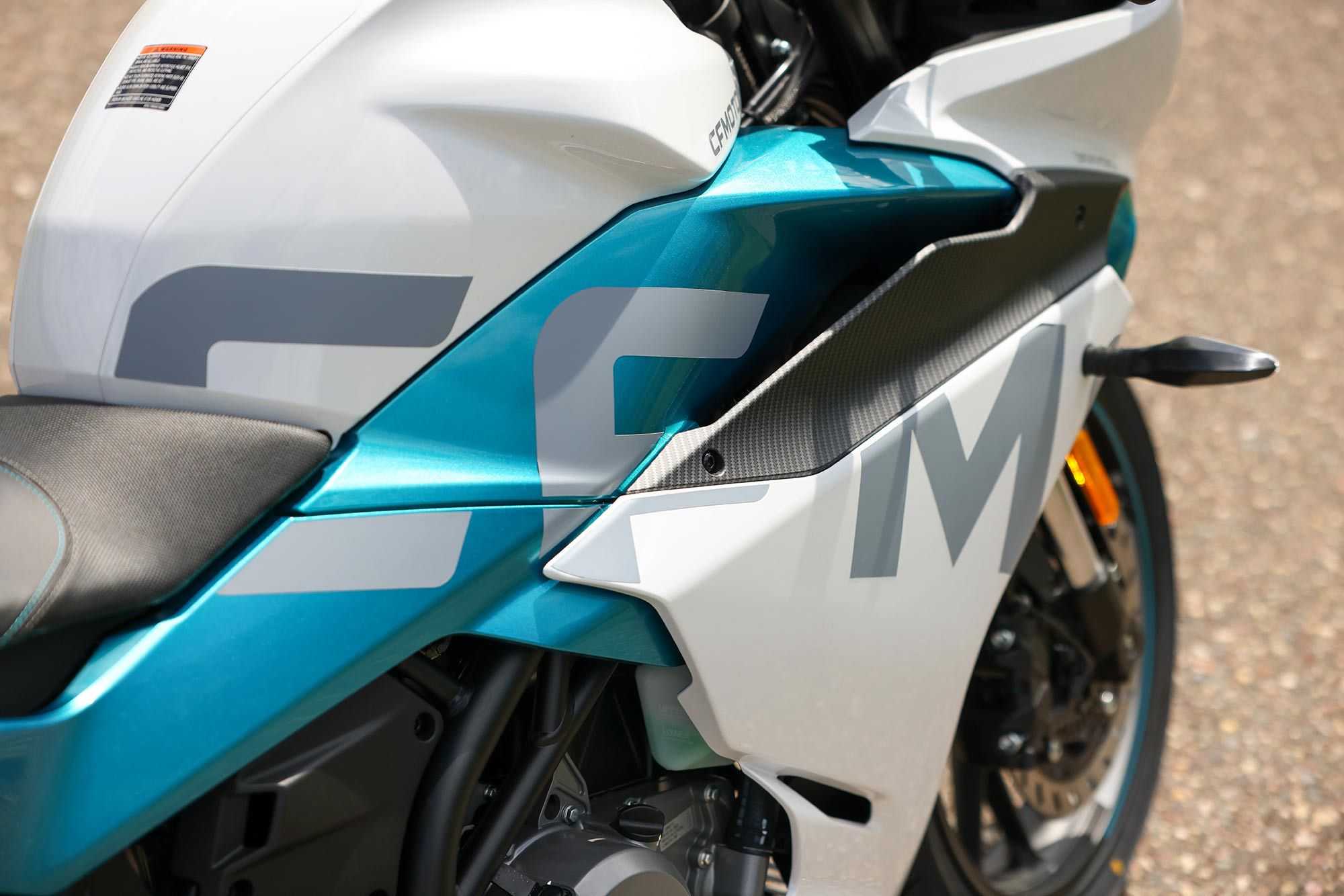
Quality
Quality is impressive across CFMoto’s entire on-road lineup, and the 300SS is no exception. Precision welds line the entirety of the steel trellis frame, plastics are robust and neatly molded, and the bike’s overall feel rivals the current top contenders in its class.
For nearly $1,000 less than its competitors, the 300SS is certainly a considerable offering in the entry-level streetbike class.
2022 CFMoto 300SS Claimed Specifications
| MSRP: | $4,299 |
|---|---|
| Engine: | 292cc, DOHC, liquid-cooled single-cylinder; 4 valves/cyl. |
| Bore x Stroke: | 78.0 x 61.2mm |
| Transmission/Final Drive: | 6-speed/chain |
| Fuel Delivery: | Bosch EFI |
| Clutch: | Wet, multiplate slipper clutch |
| Frame: | Tubular steel w/ aluminum alloy swingarm |
| Front Suspension: | Inverted fork |
| Rear Suspension: | Monoshock, 5-click preload adjustable |
| Front Brake: | Radial-mounted 4-piston caliper, 300mm disc w/ ABS |
| Rear Brake: | 1-piston floating caliper, 245mm disc w/ ABS |
| Wheels, Front/Rear: | Aluminum alloy; 17 x 3 in. / 17 x 3.5 in. |
| Tires, Front/Rear: | 110/70R-17, 140/60R-17 |
| Rake/Trail: | 25.0°/4.1 in. |
| Wheelbase: | 53.5 in. |
| Ground Clearance: | 5.9 in. |
| Seat Height: | 30.7 in. |
| Fuel Capacity: | 3.2 gal. |
| Claimed Wet Weight: | 364 lb. |
| Contact: | cfmotousa.com |
Source: MotorCyclistOnline.com